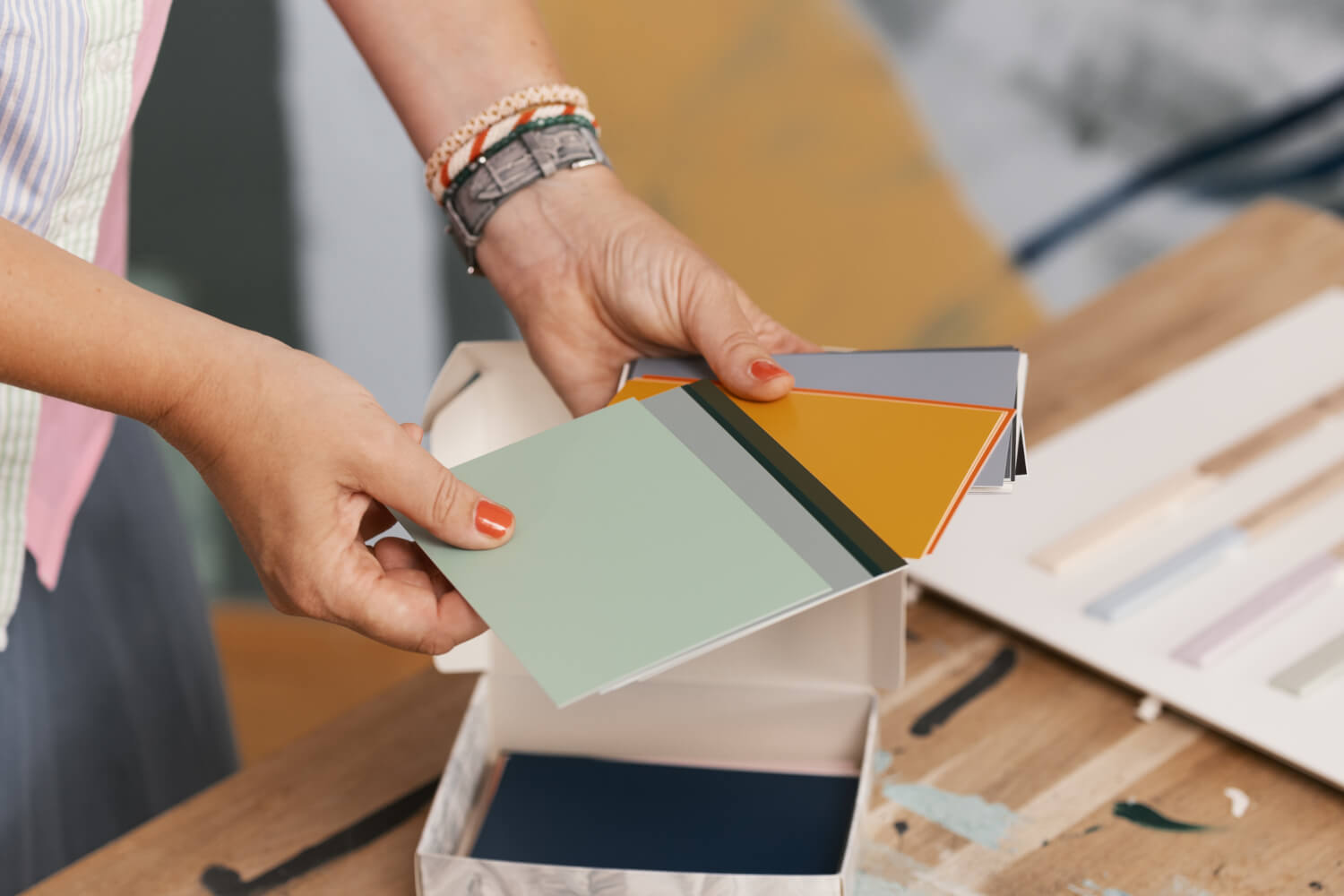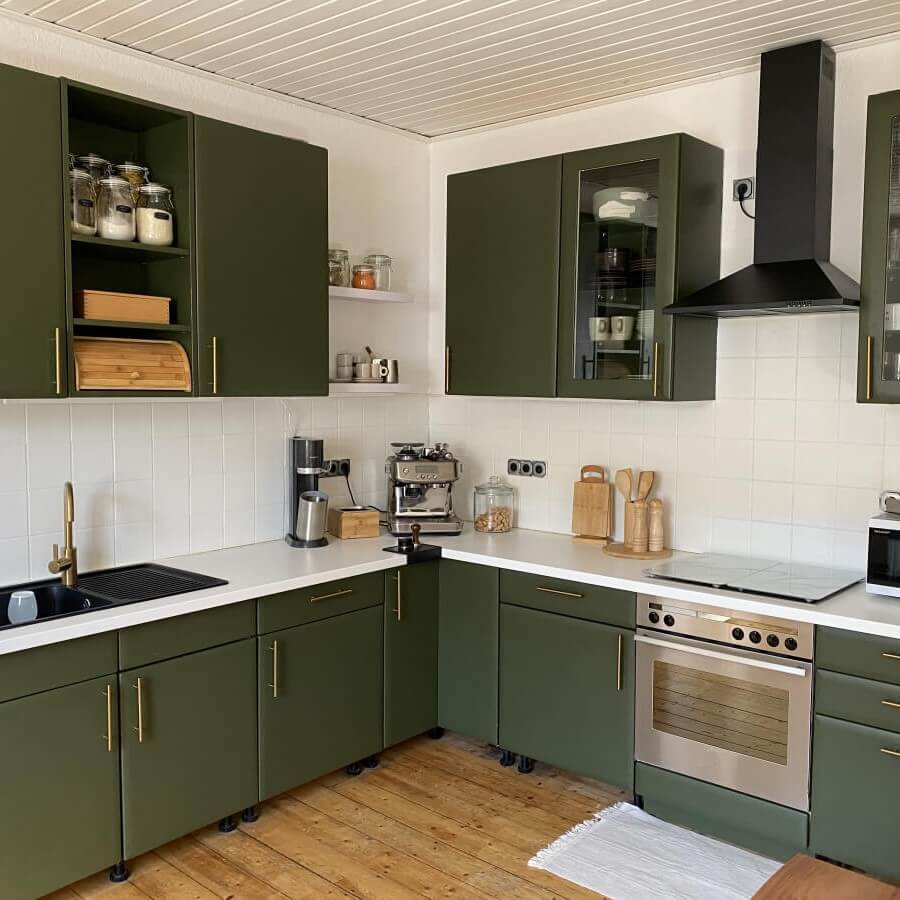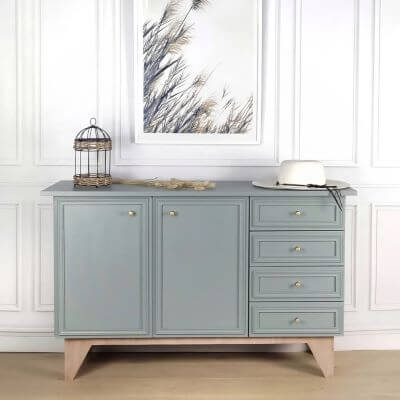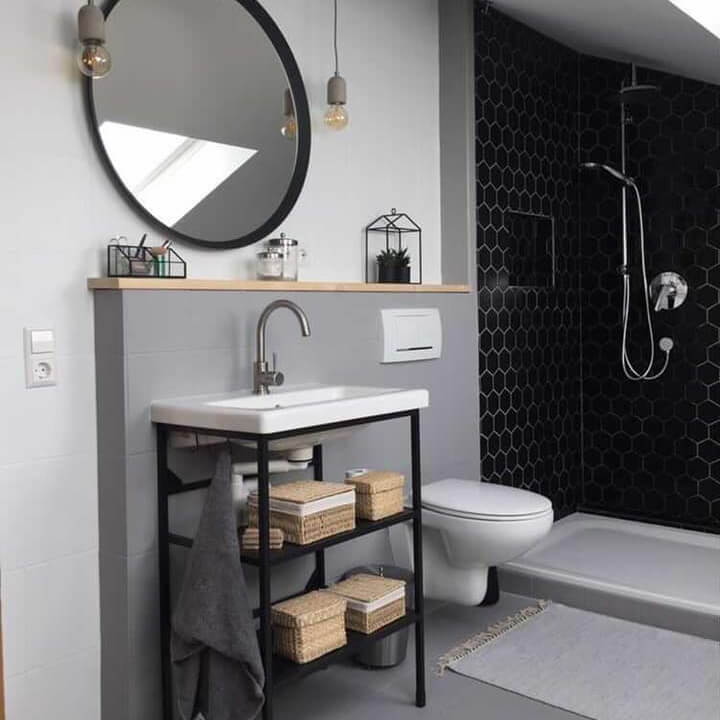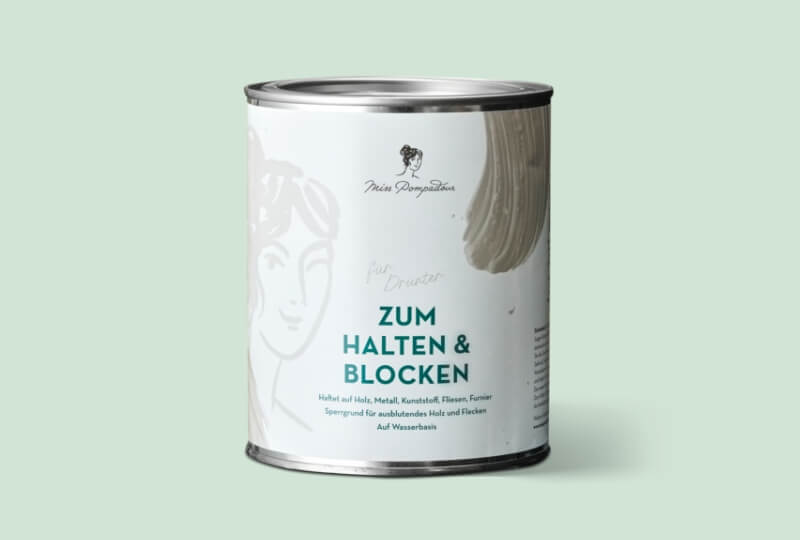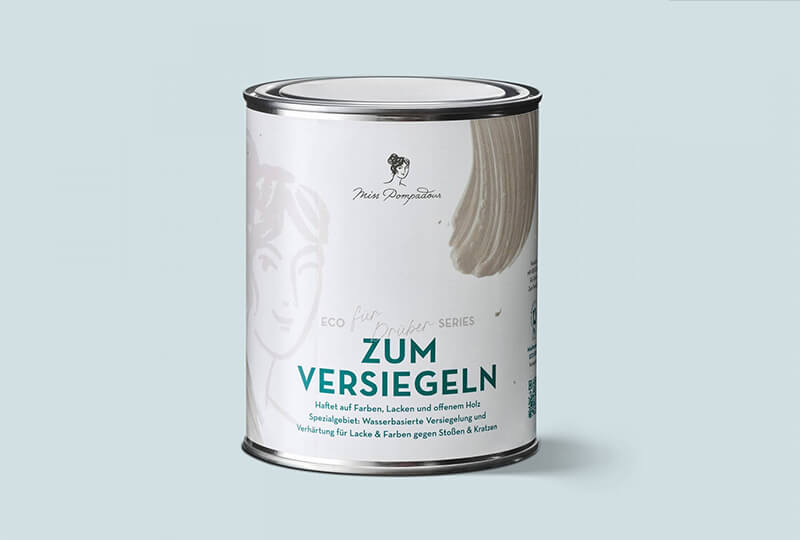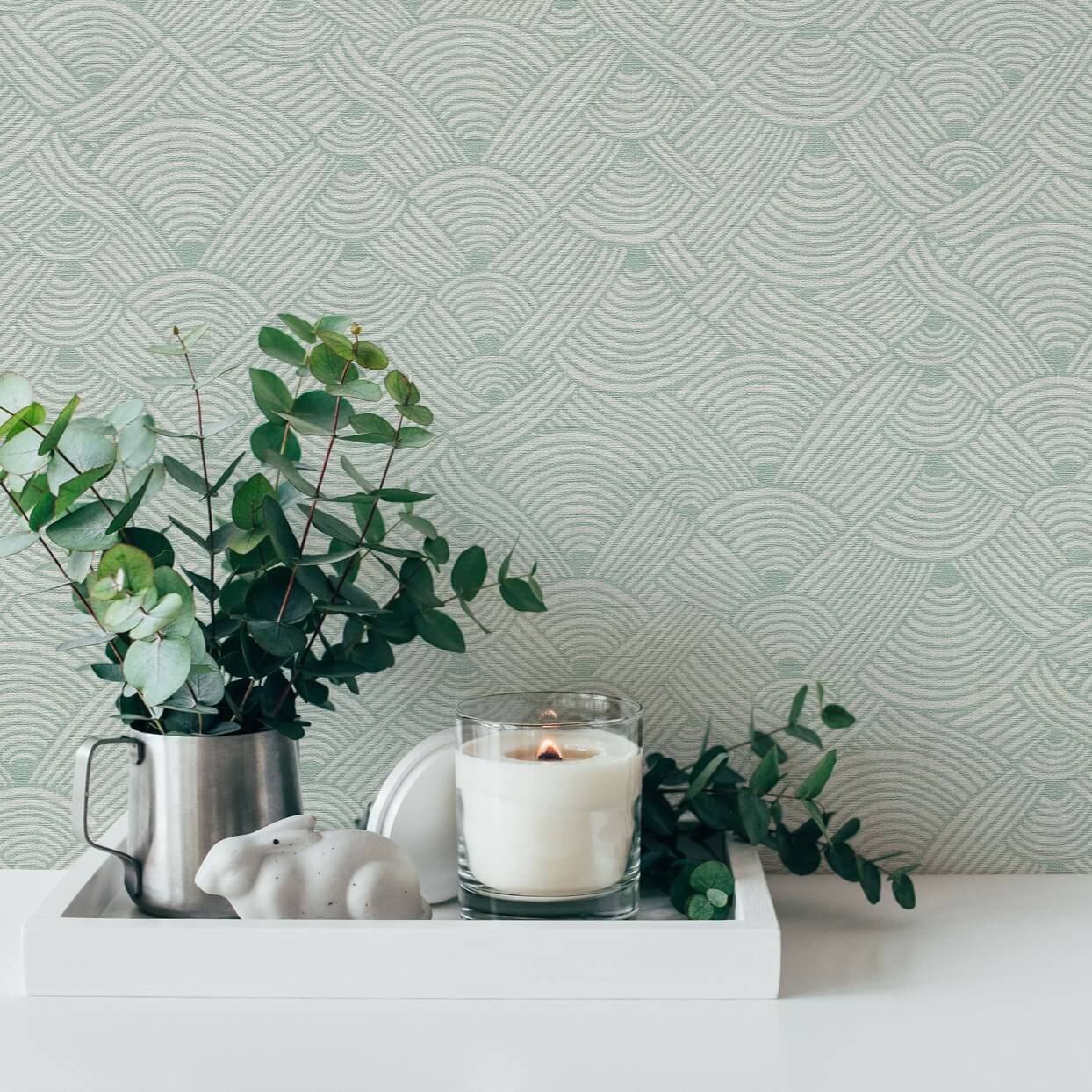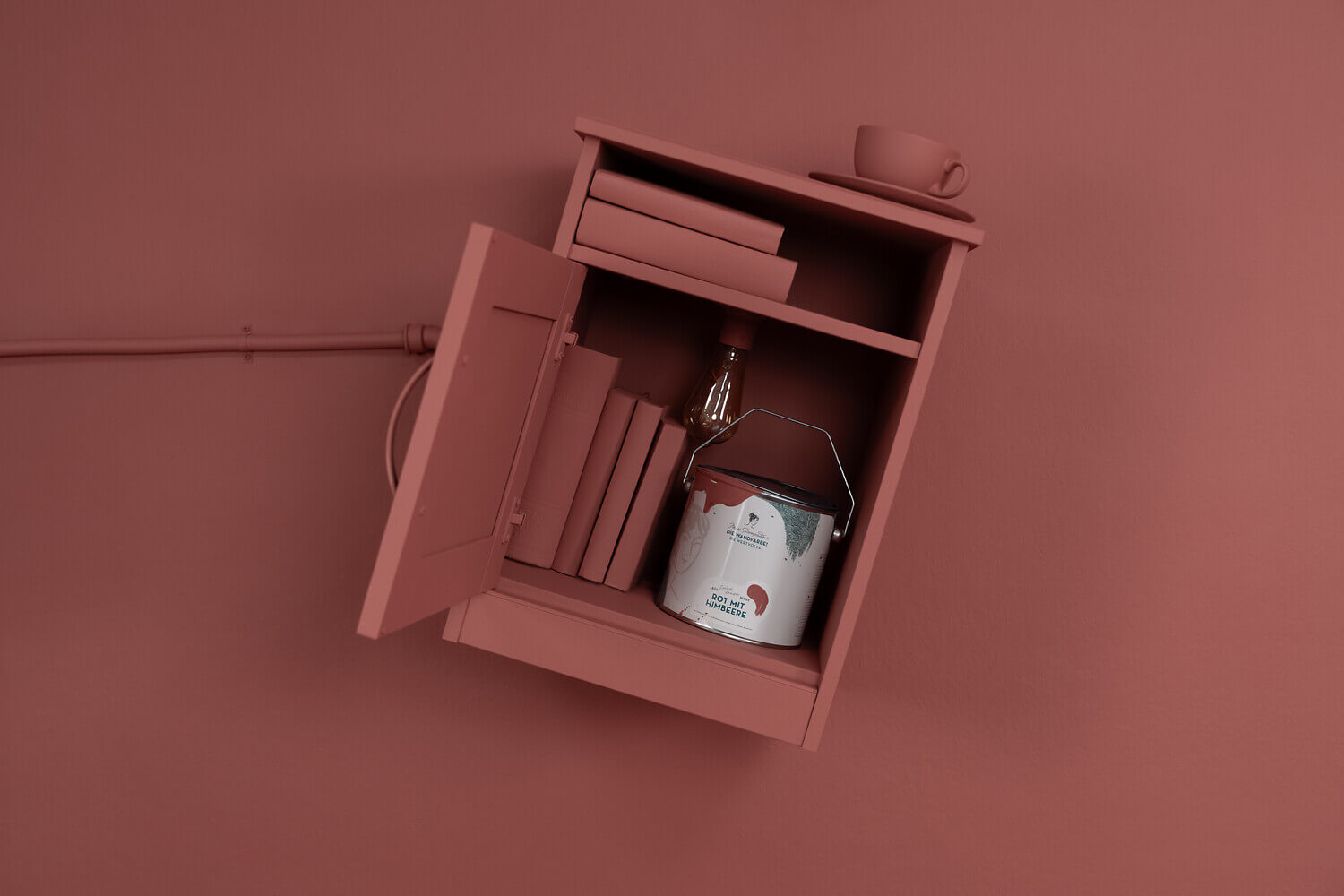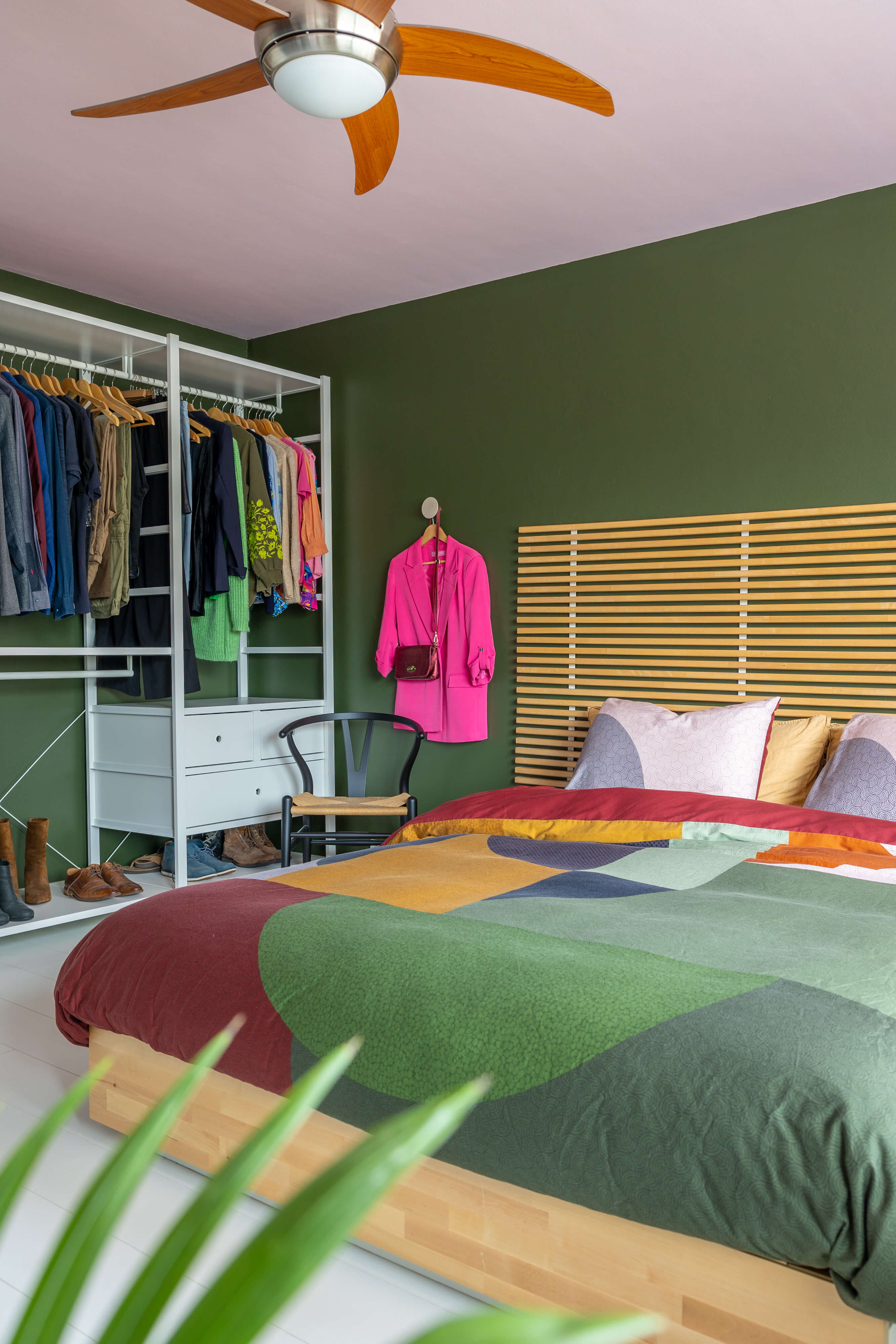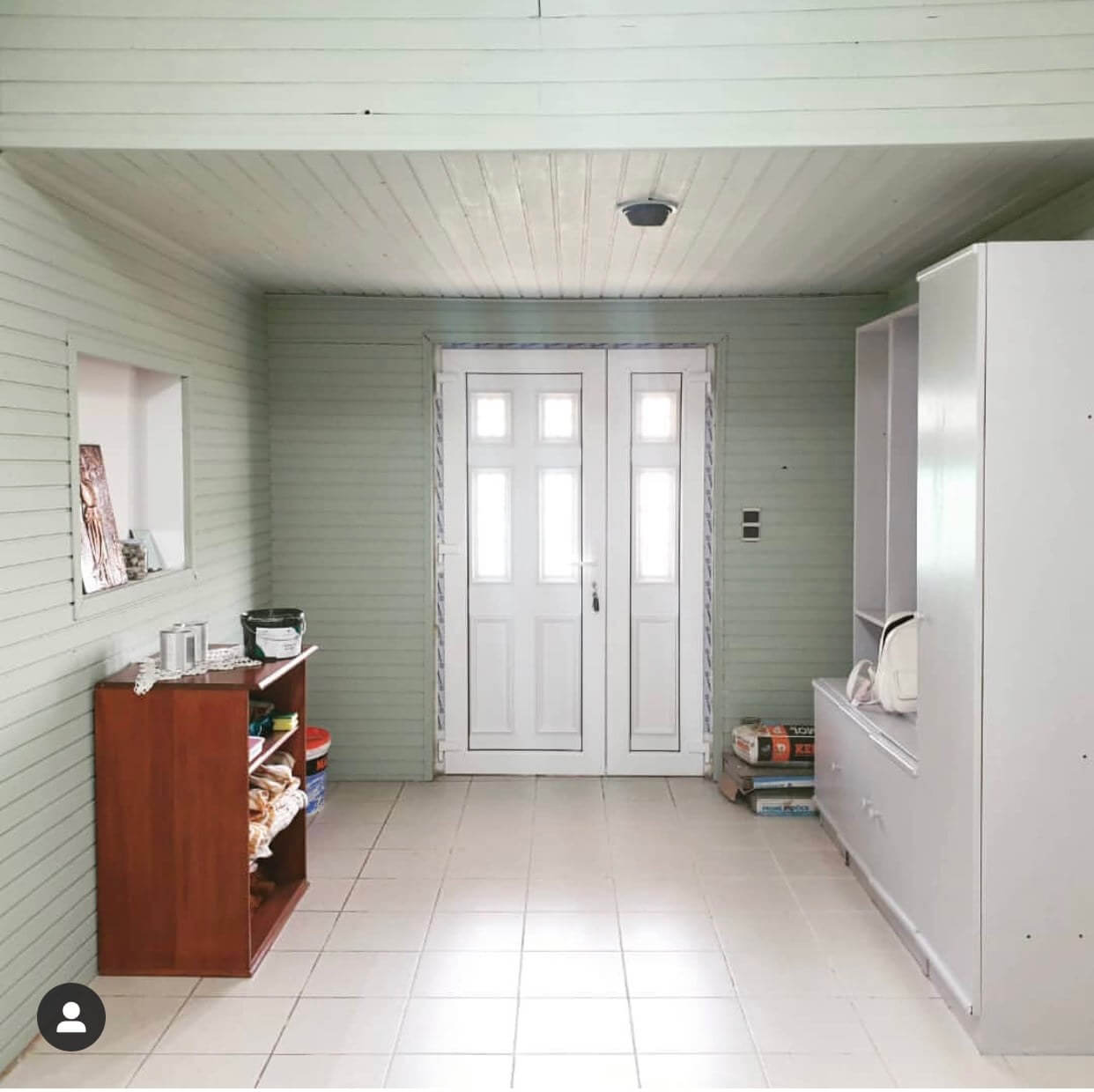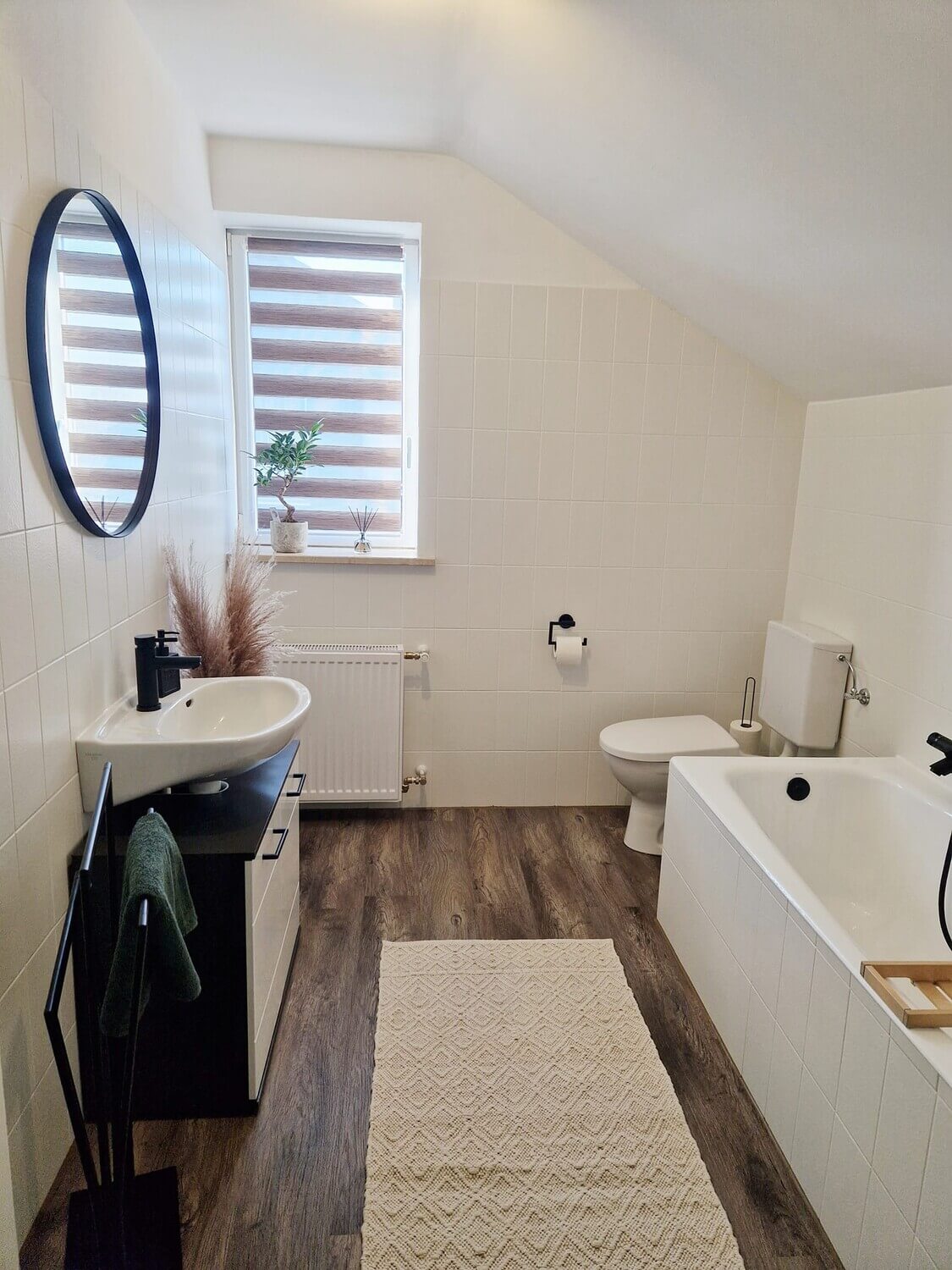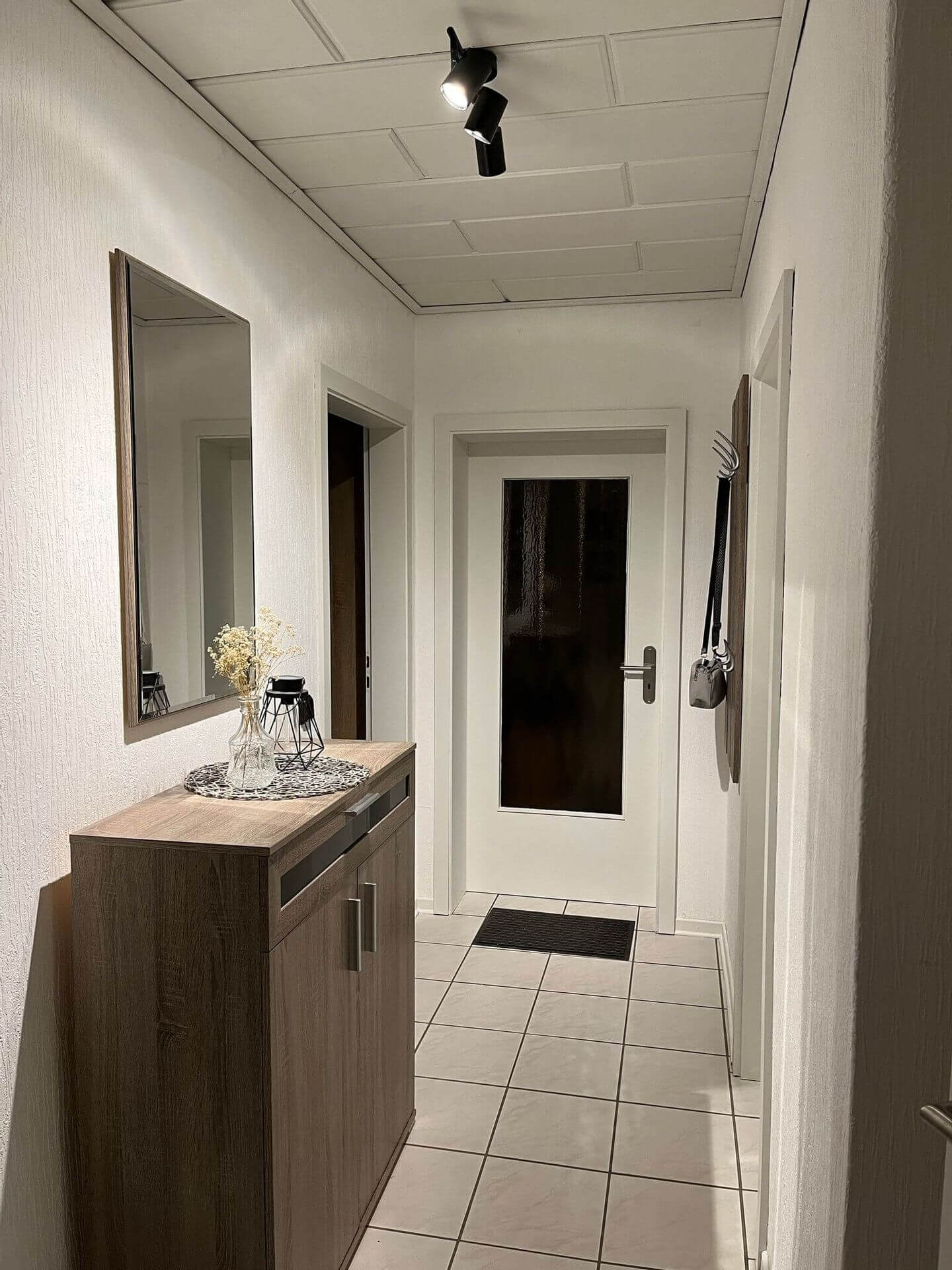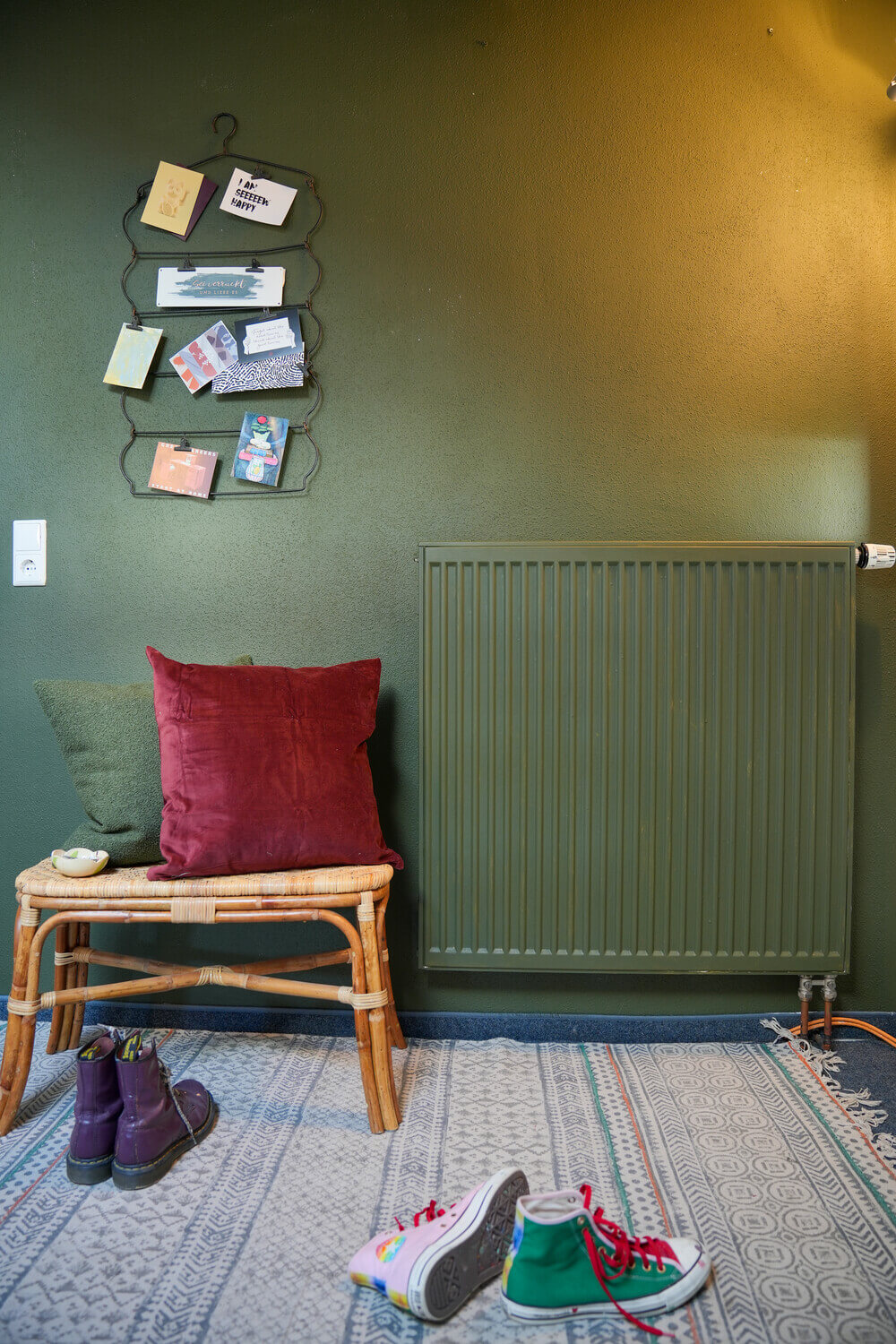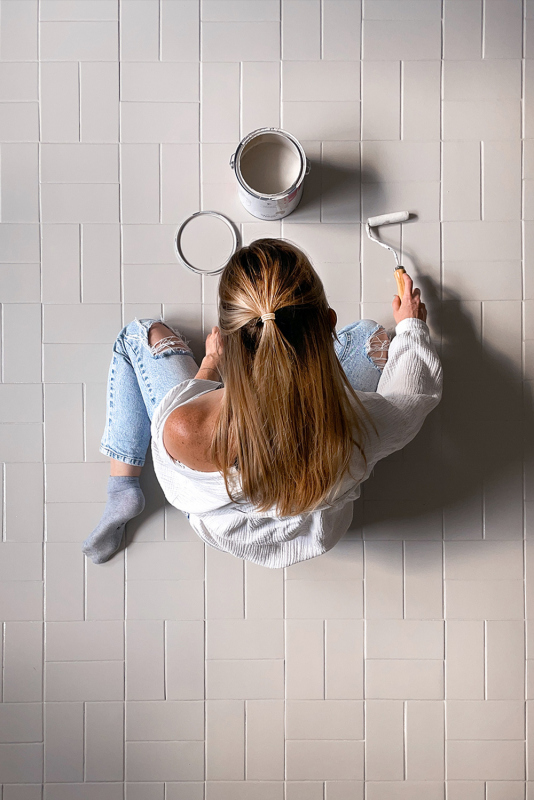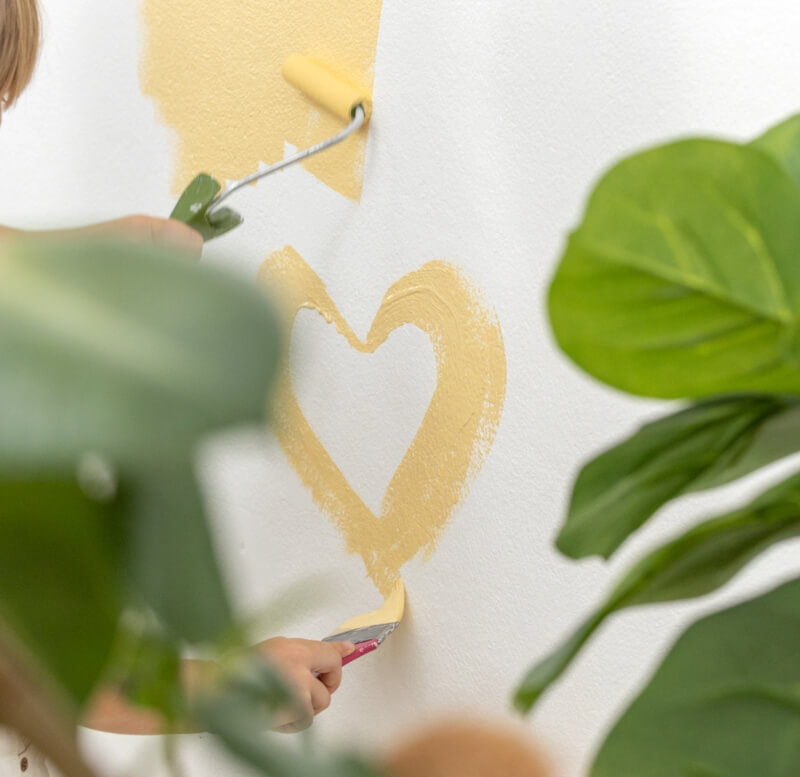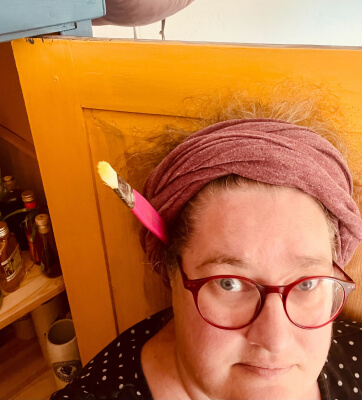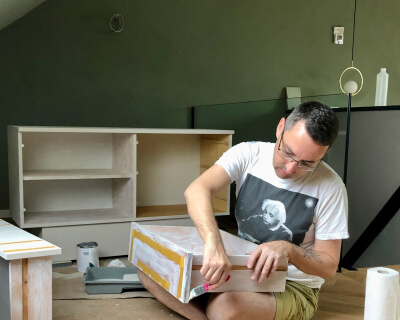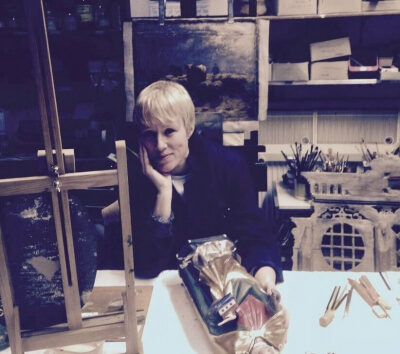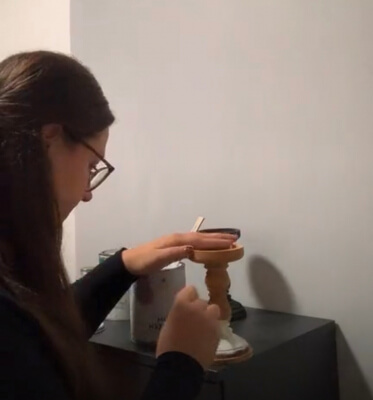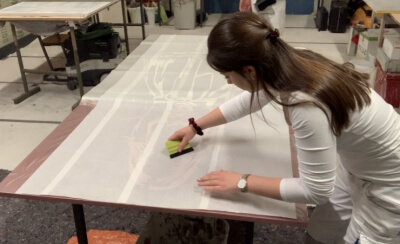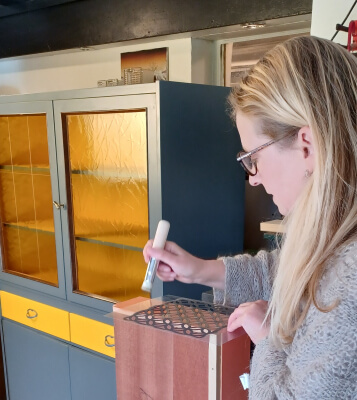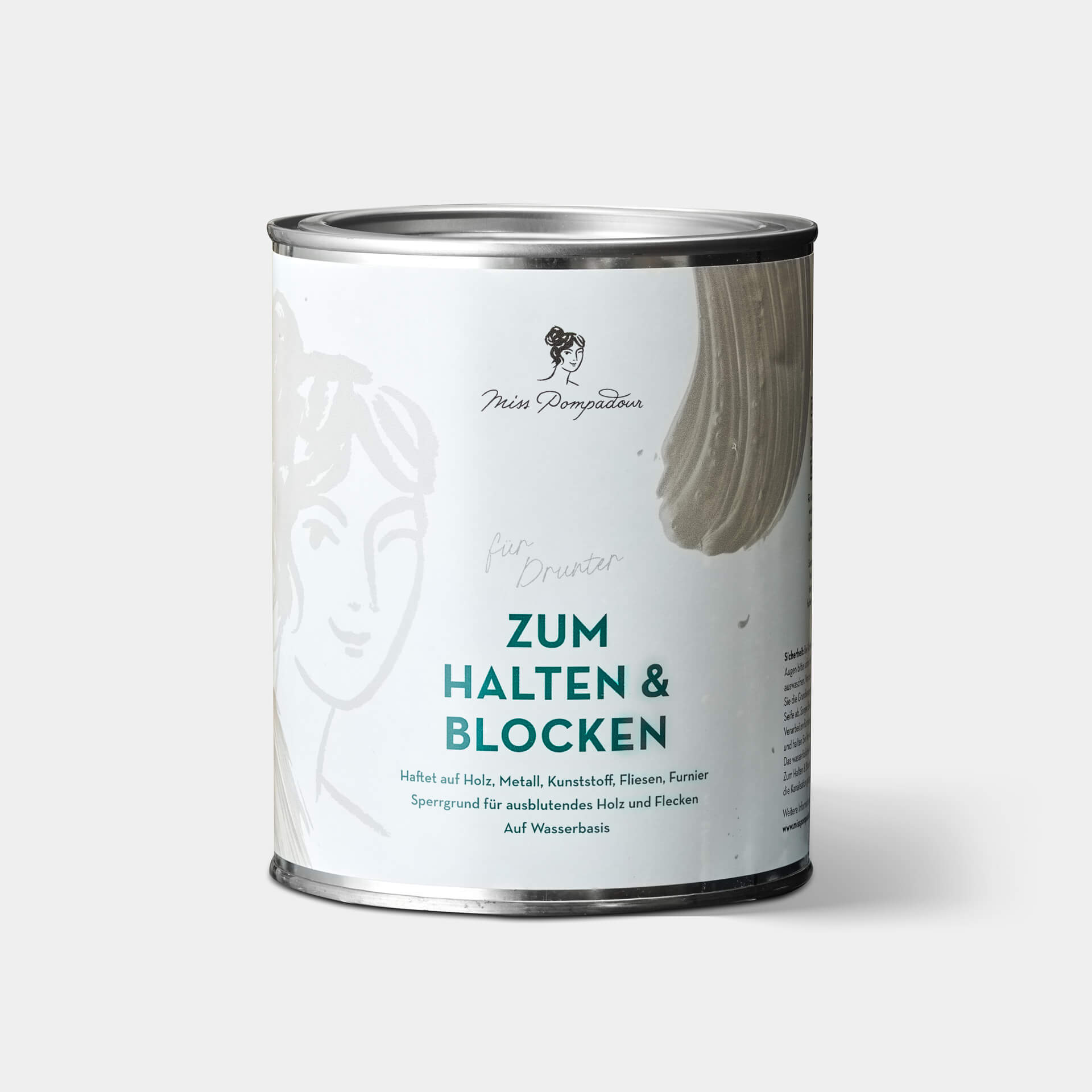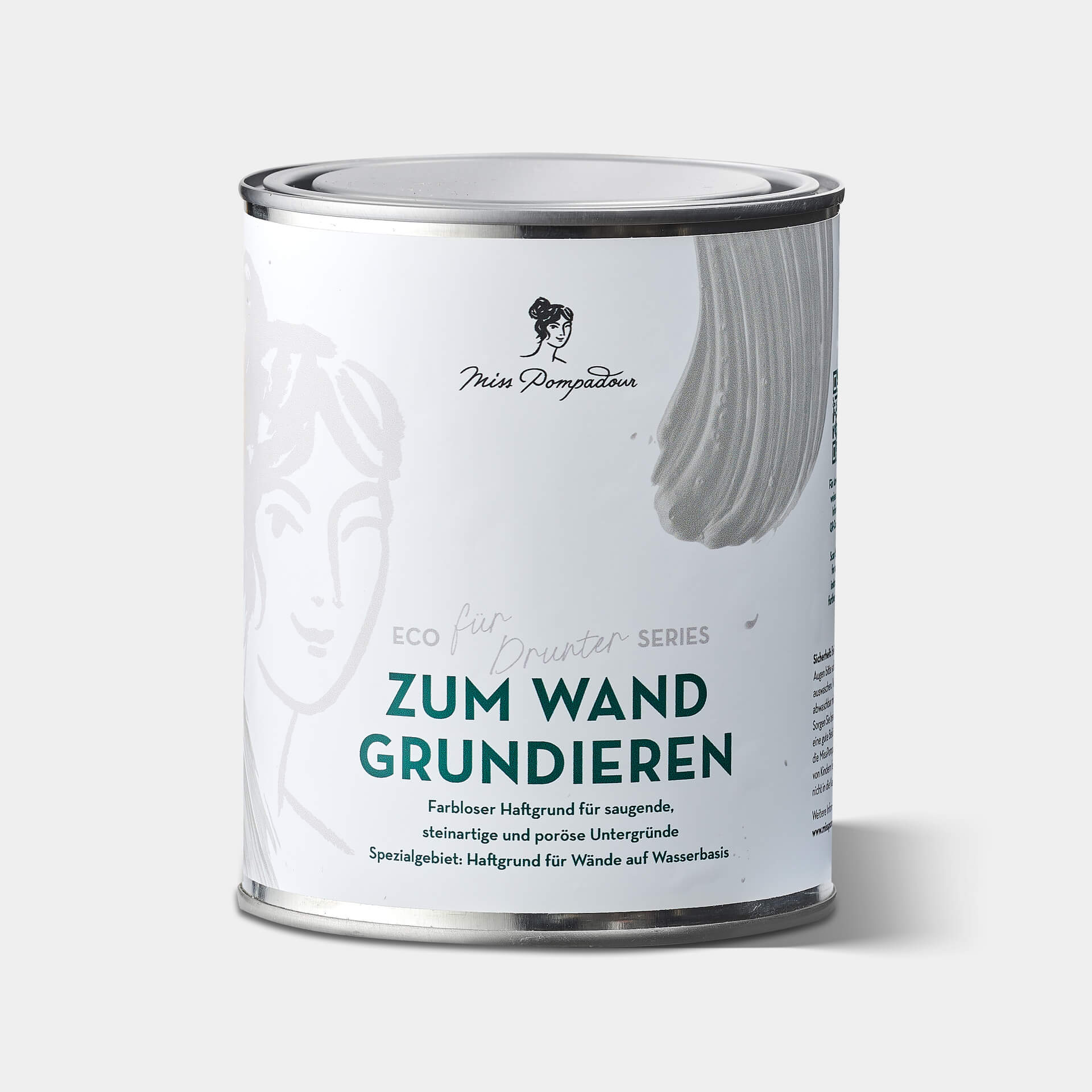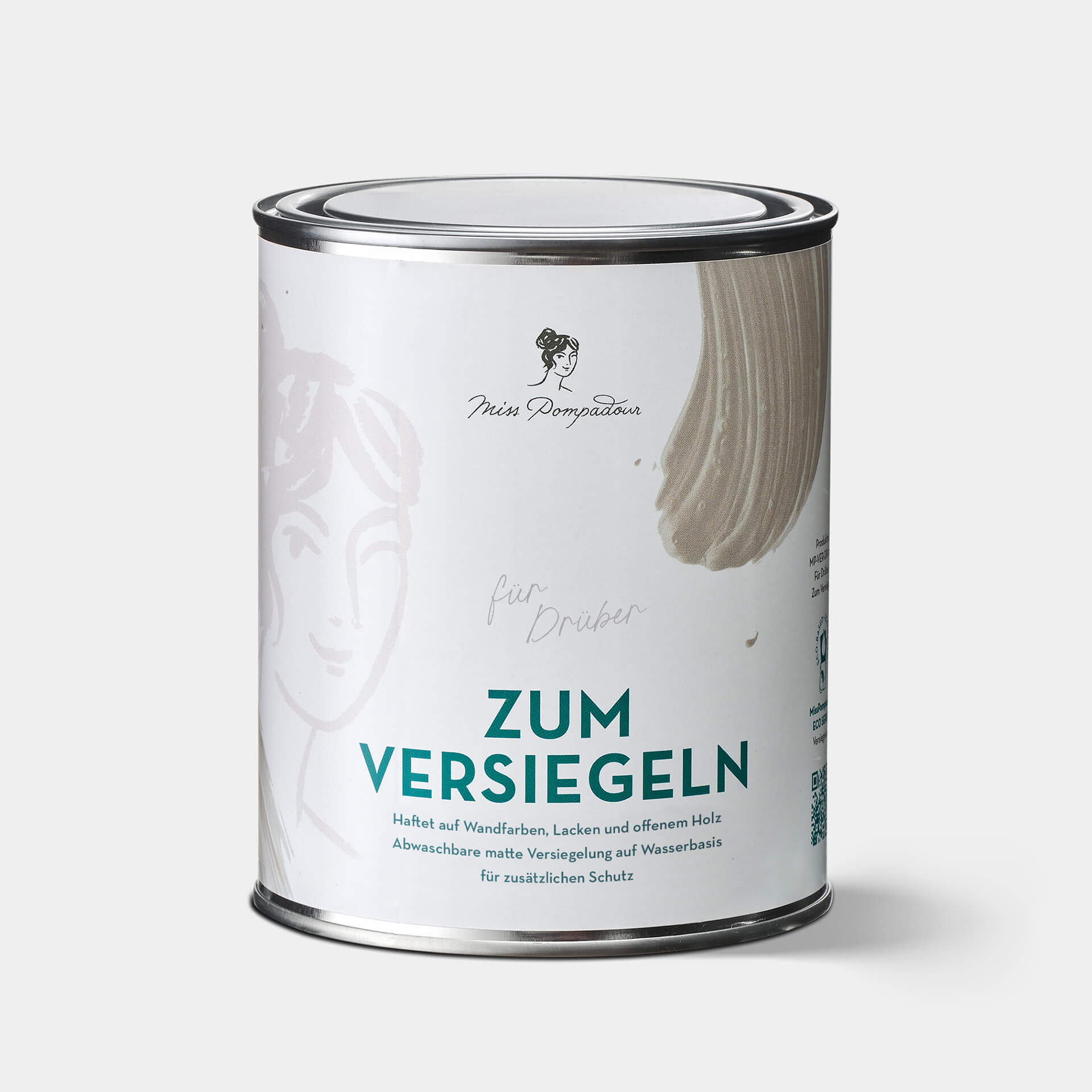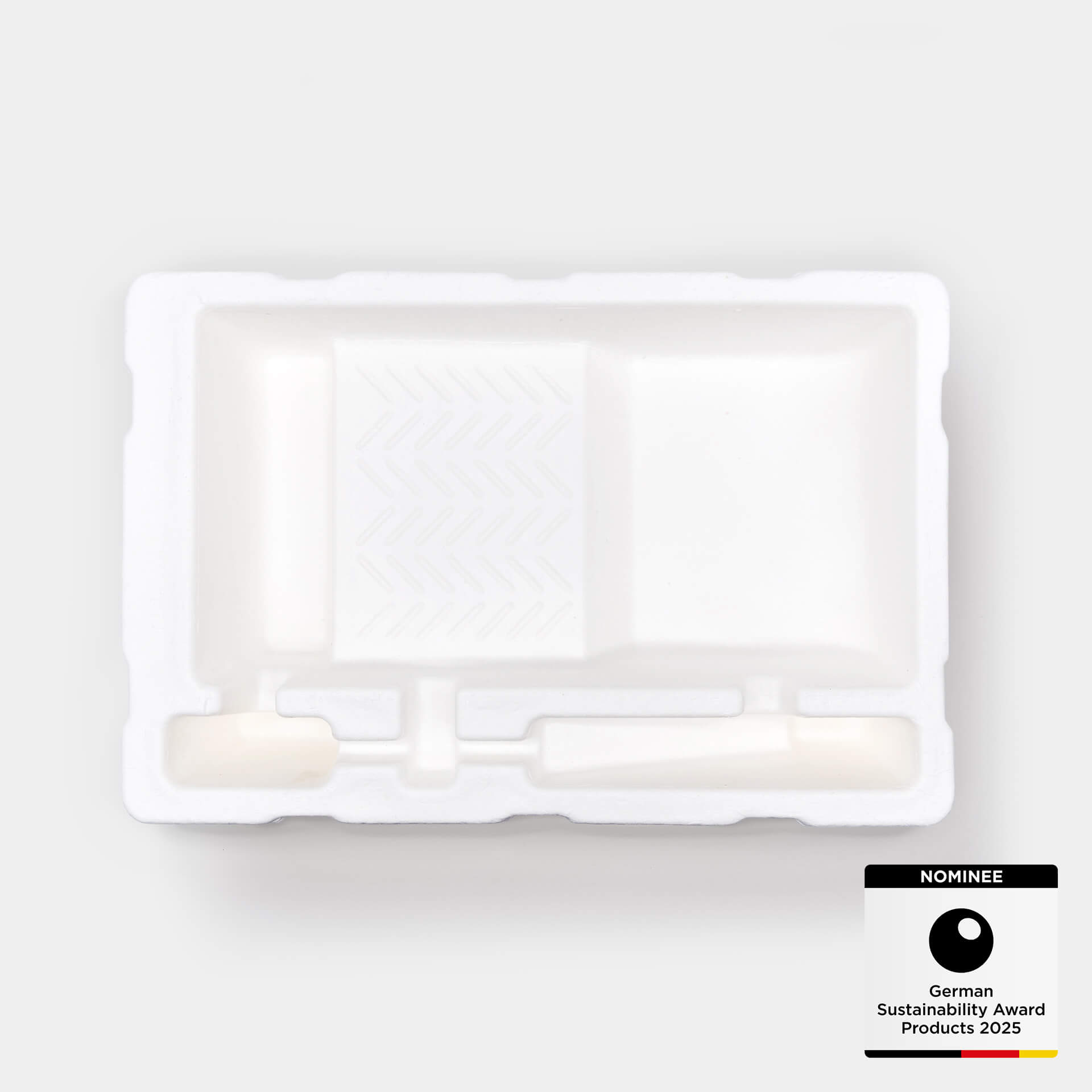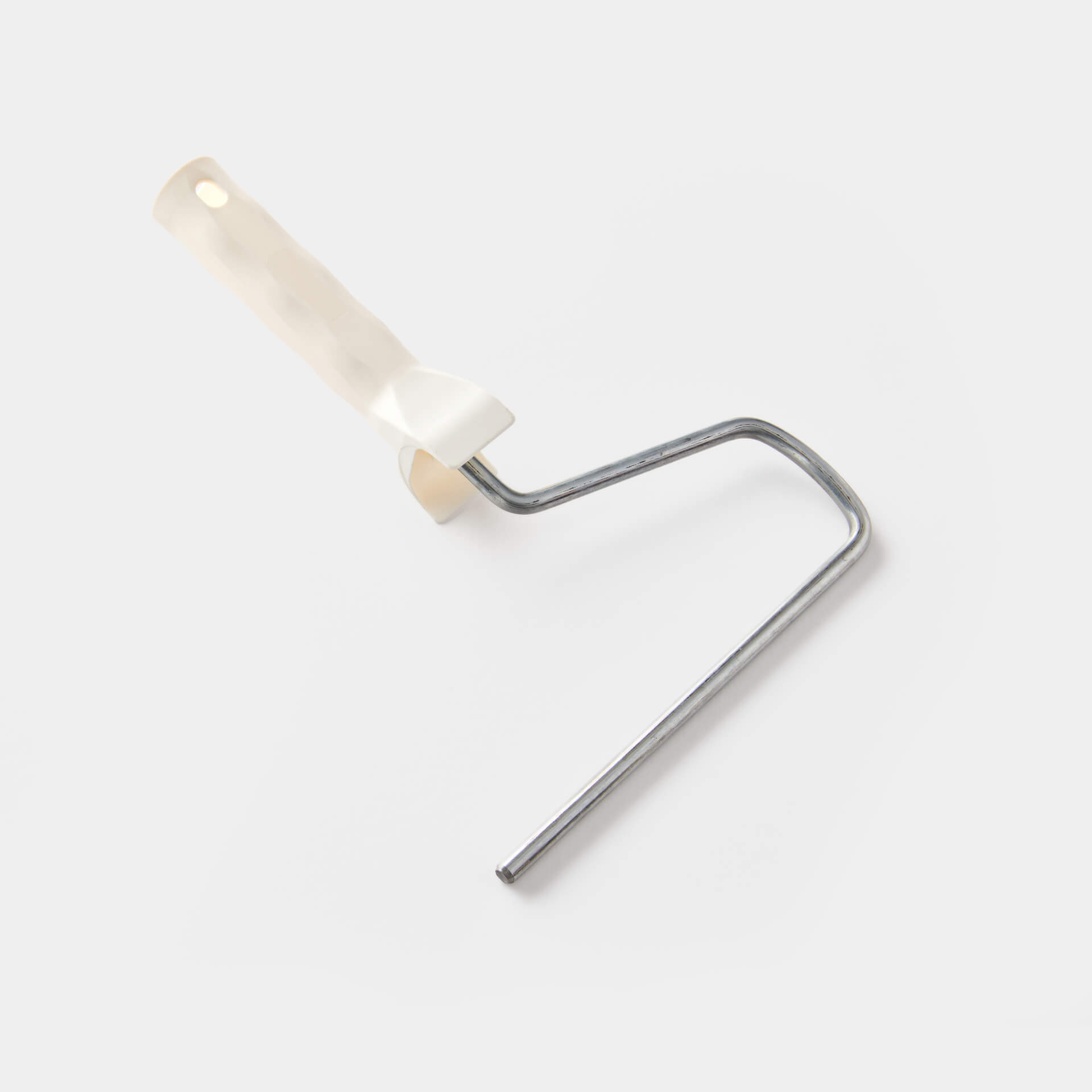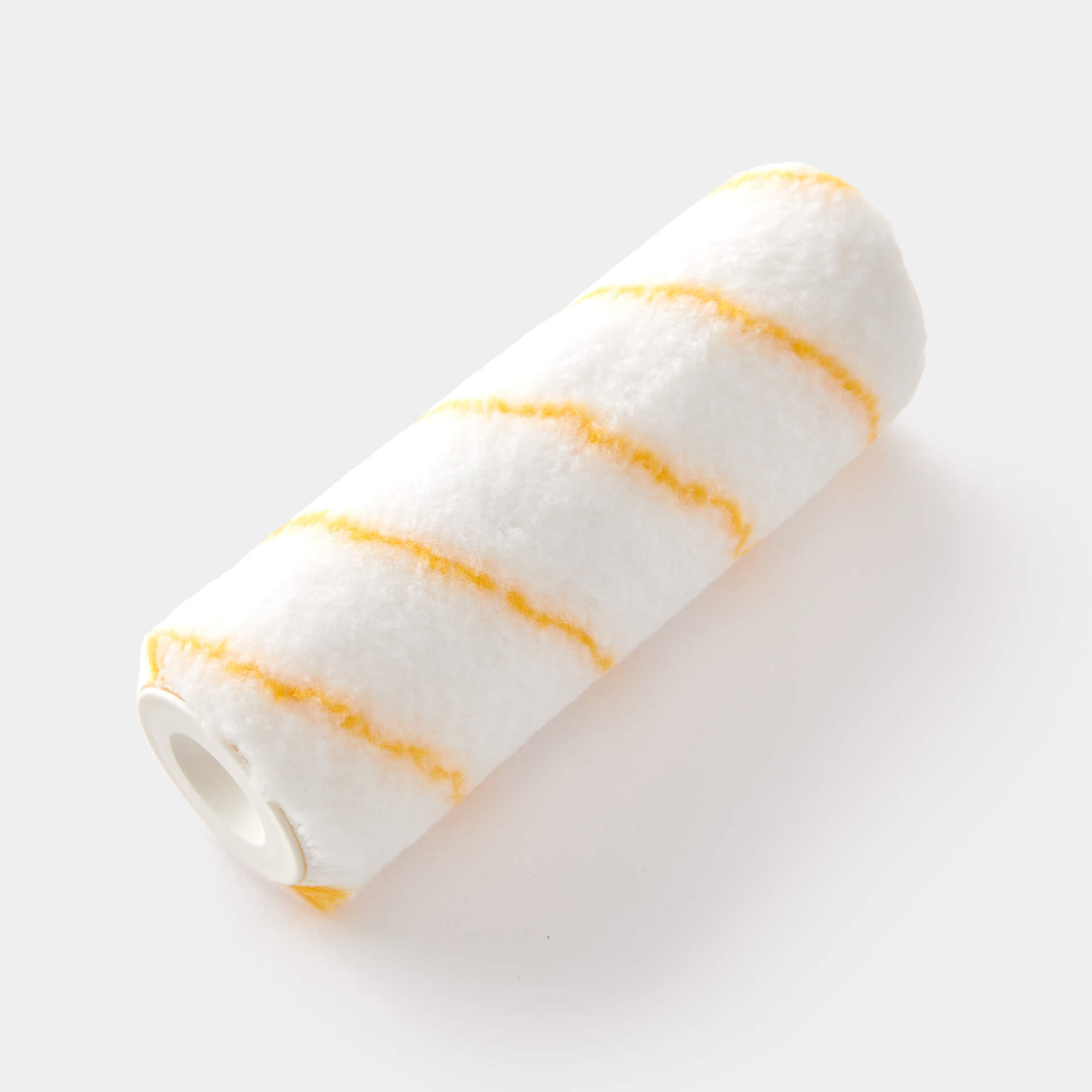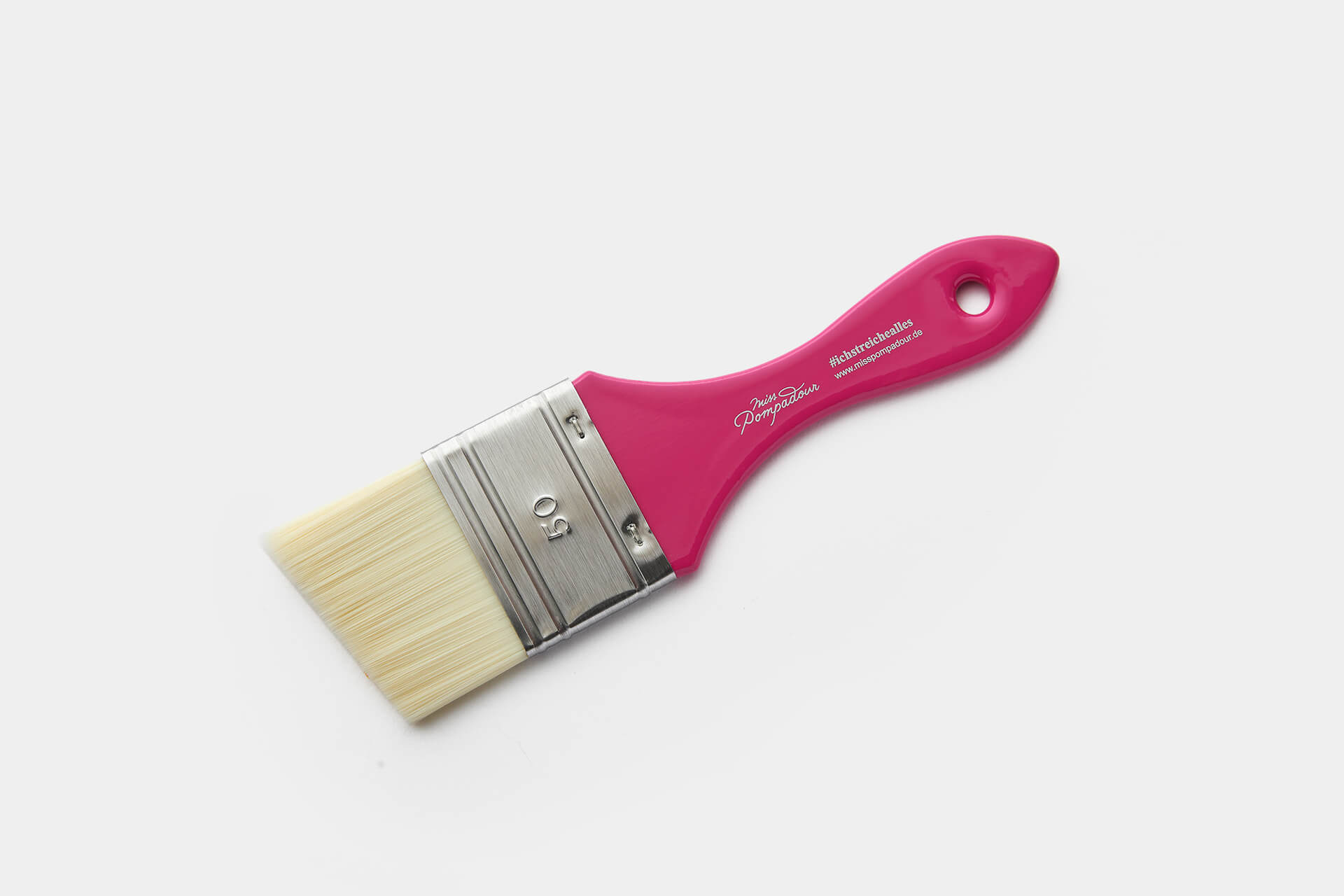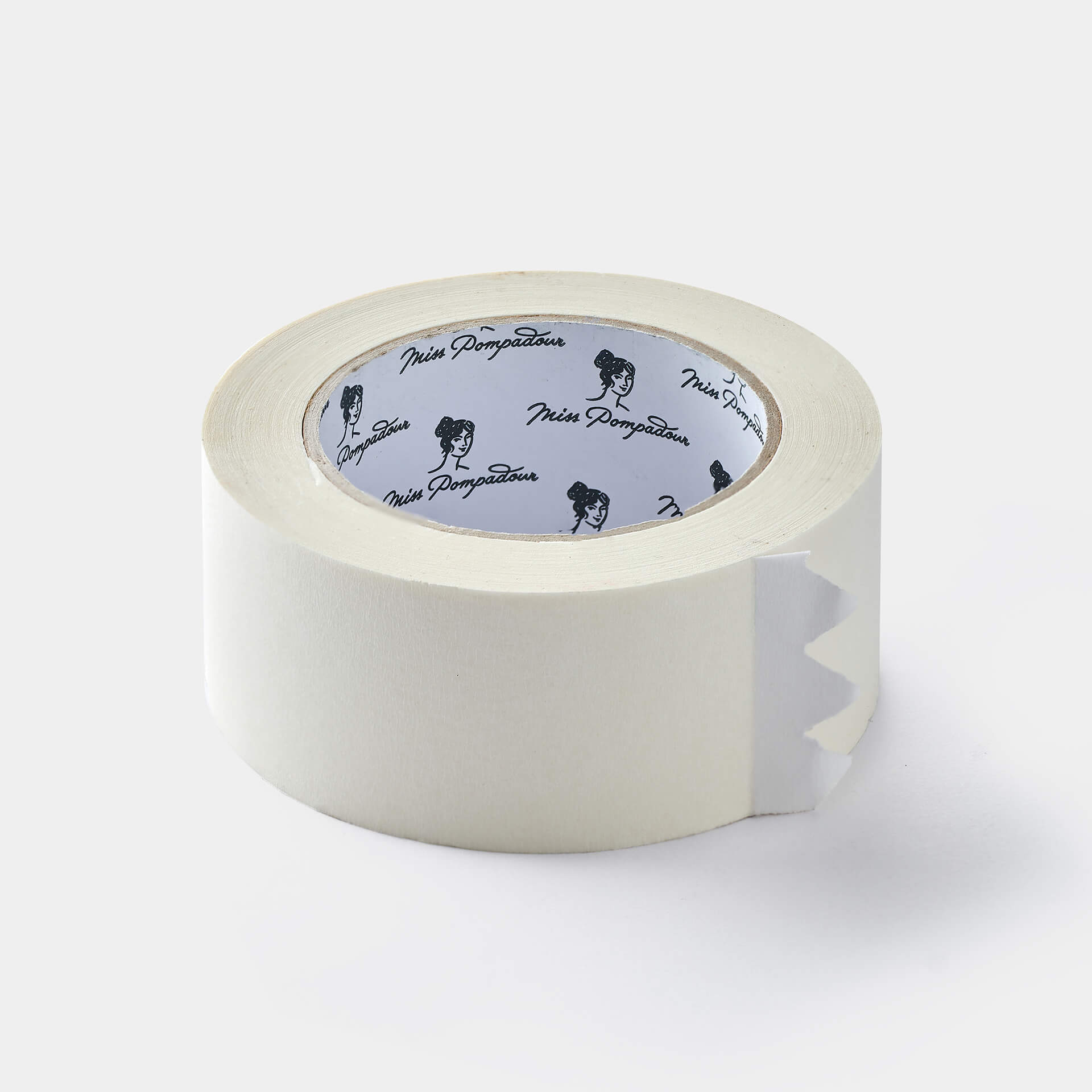Monochrome furnishings: paint the furniture, ceiling and wall in the same colour
7 min reading time
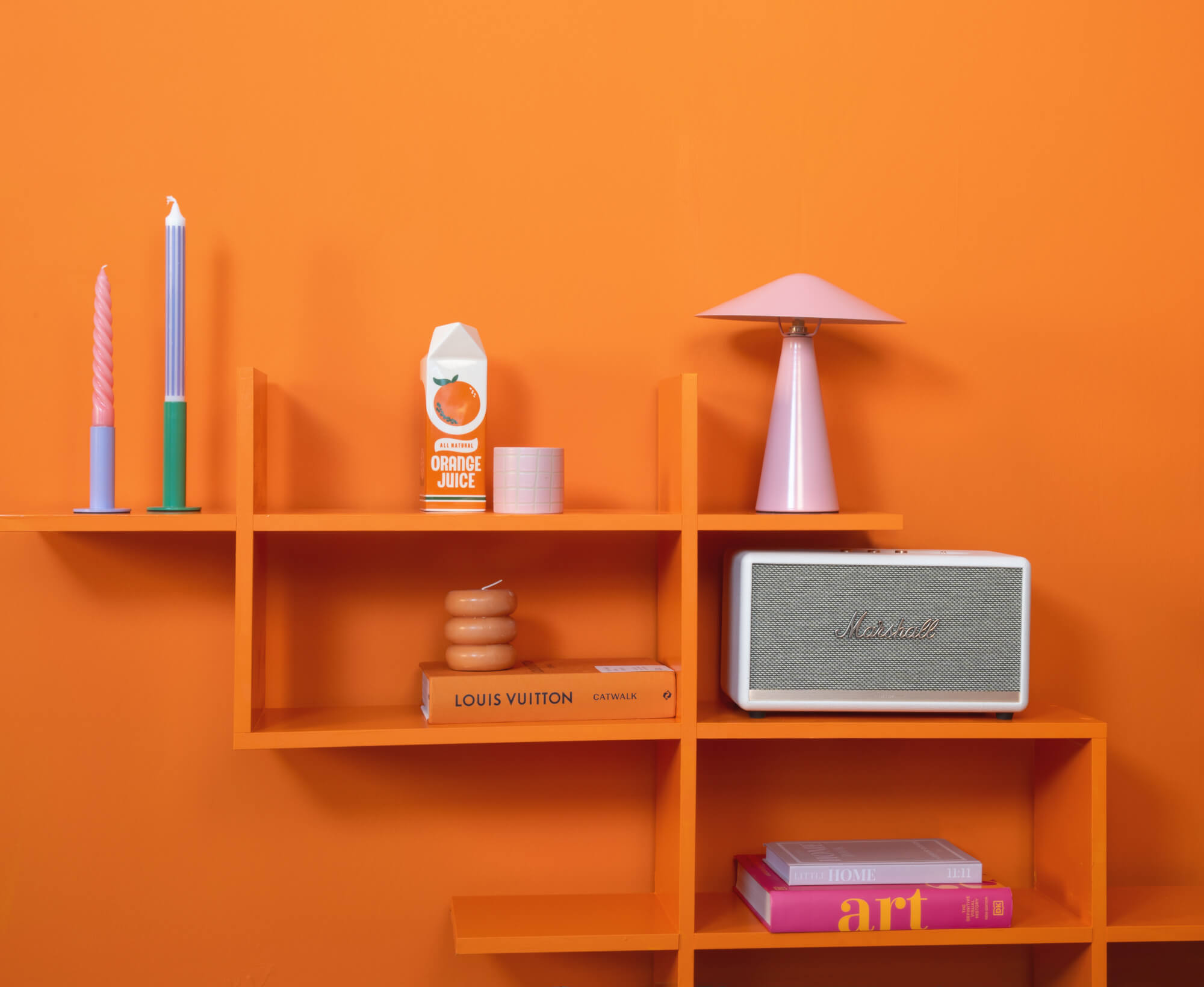
In interior design blogs and magazines, you occasionally come across the term " monochrome painting". But what does that actually mean? Monochrome is another term for one colour. So it means designing walls and ceilings, perhaps also furniture and radiators, in one and the same colour or colour family. A uniform colour design opens up many new furnishing possibilities.
Ideas for monochrome furnishing from our community
In our large painting community, painting friends share their impressive Before and After pictures with each other. You'll also find photos of monochrome furnishings. There are many brave people who have already dared to do it. Let their tips and tricks inspire you!
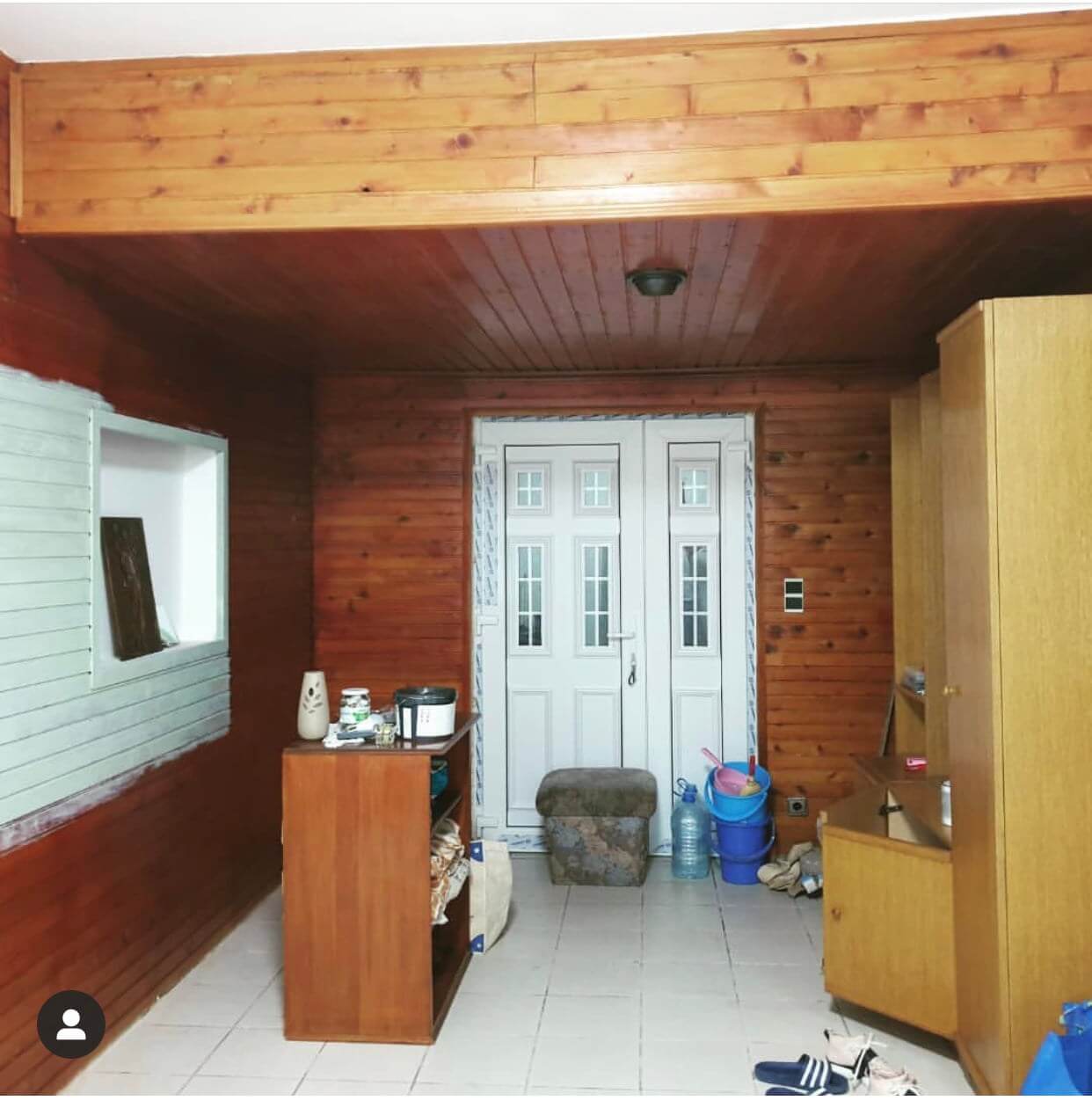
BEFORE
- All the wood made this room oppressive and cramped.
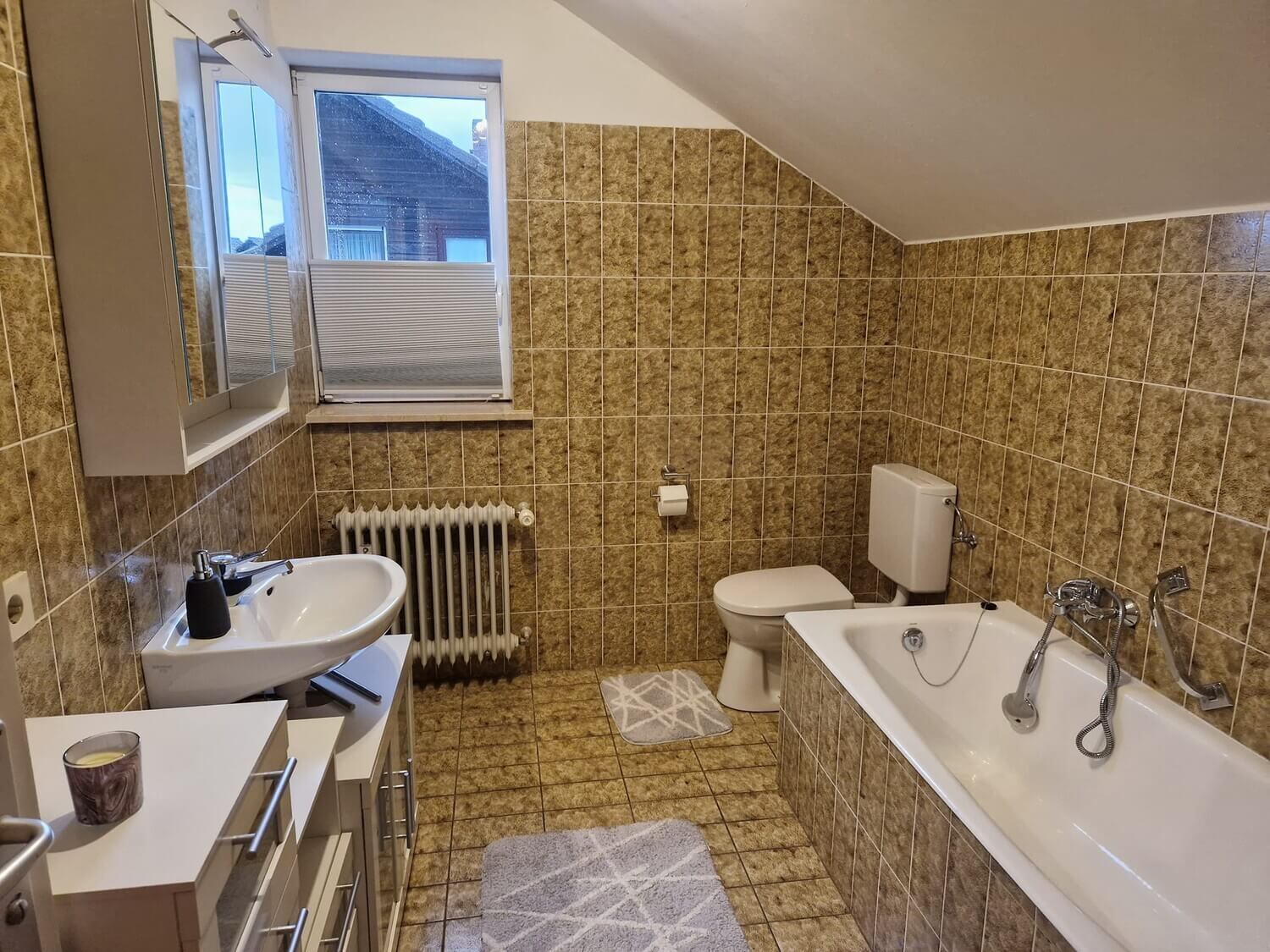
BEFORE
- This bathroom was completely out of time.
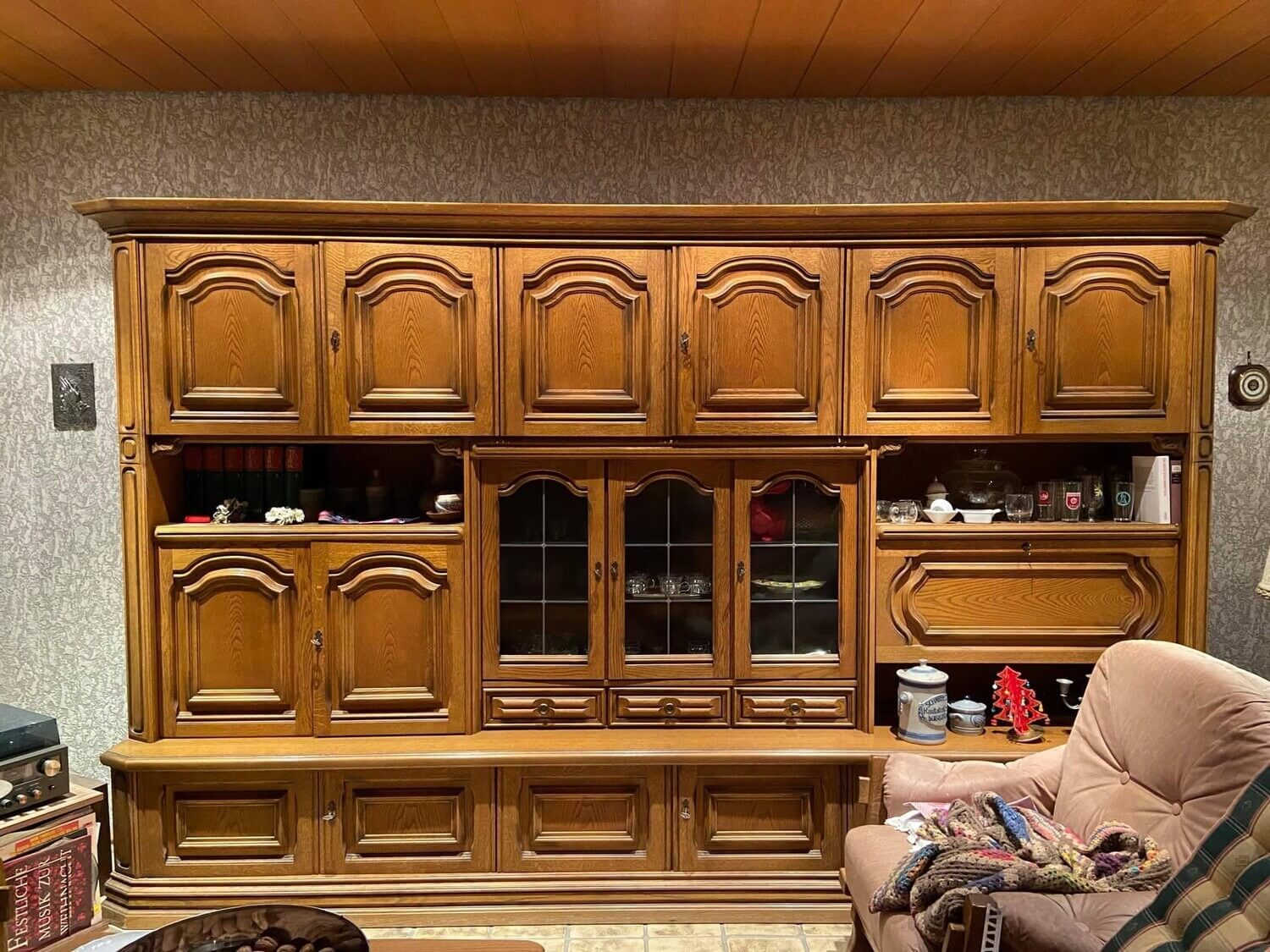
BEFORE
- This wall unit was solid, but no longer suited the customer's style.
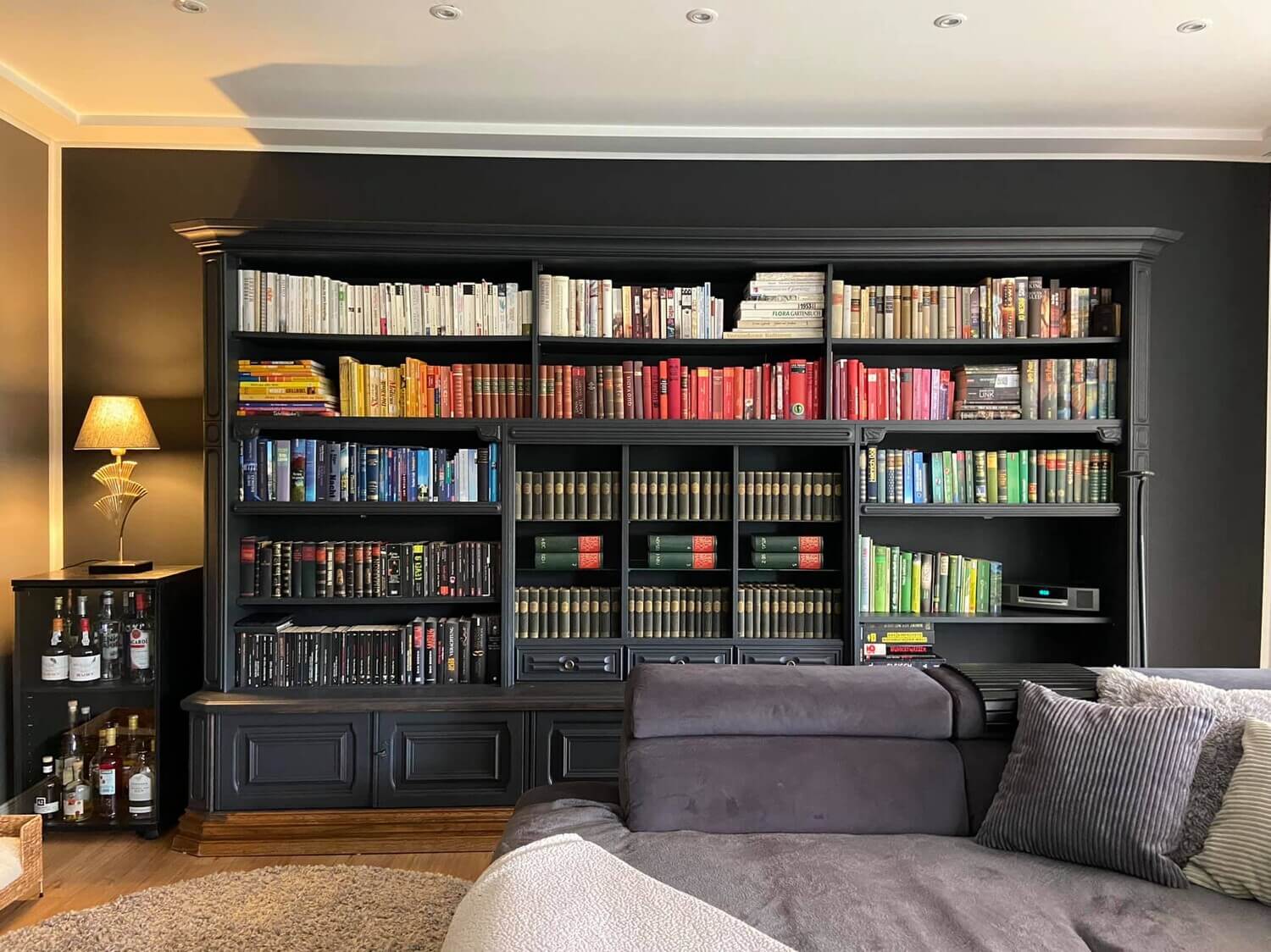
AFTER
- She decided to redesign the wall unit with paint. A complete success!
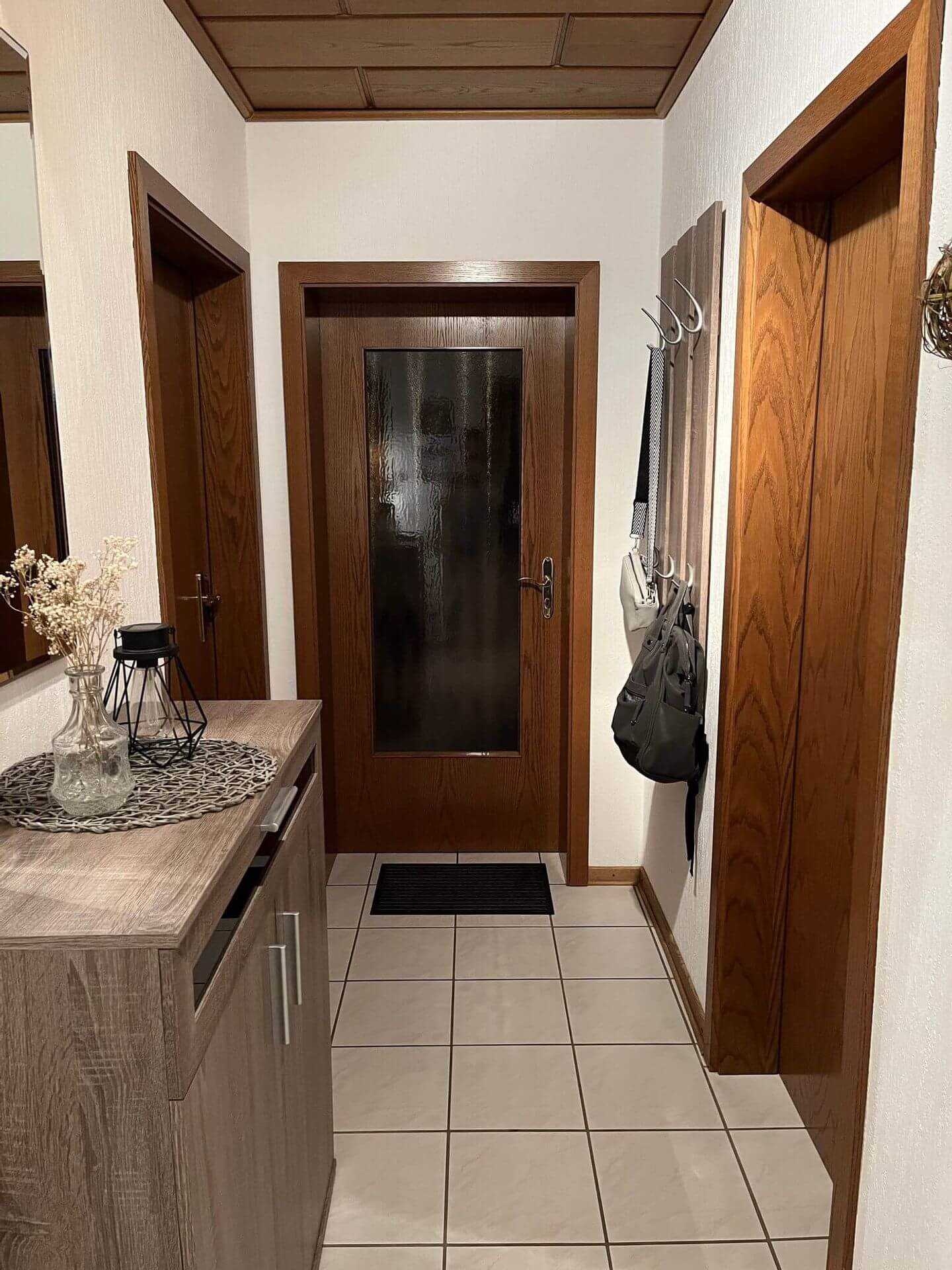
BEFORE
- The doors and ceiling made this entrance area dark.
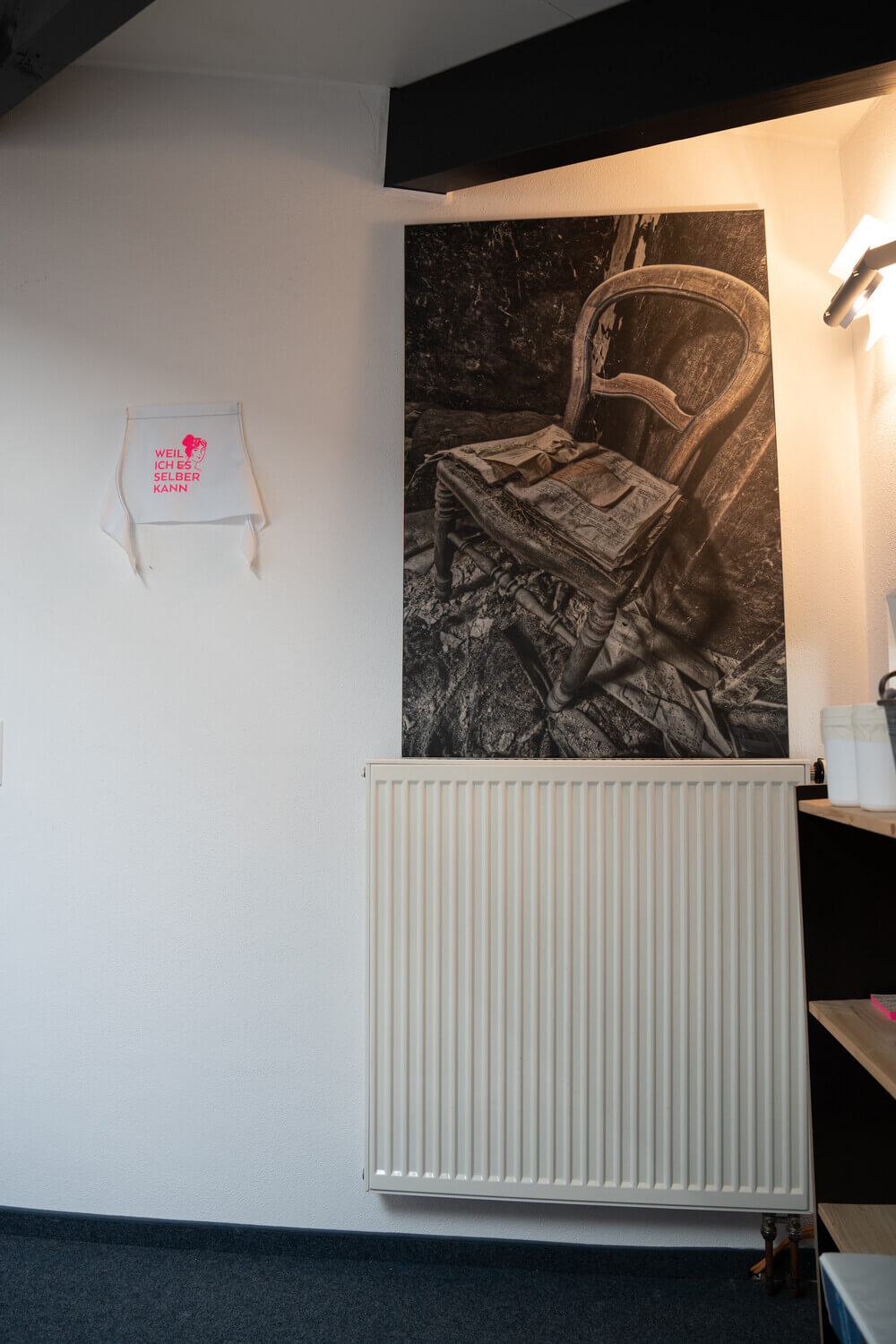
BEFORE
- Actually, almost tone-on-tone, but here the pizzazz was missing.
How does monochrome design influence the effect of a room?
A tone-in-tone design can, for example, be the combination of a ceiling and wall in the same colour. But it is also monochrome to paint a piece of furniture in the same colour shade as the wall. Of course, everything in a room can also have the same colour: Ceiling, walls, furniture and curtains. With all these design options, you should still consider the effect of the room.
Basically, a ceiling and walls in the same colour make a room look calm and uniform. But be careful! If the ceilings are not very high and you also choose a darker colour shade, a room can quickly look like a cave.
A great way to create a monochrome look is to use furniture in the same colour as the wall. If you place a piece of furniture painted in the same colour as the wall in front of the wall of the same colour, it forms a visual connection with the background. It looks less bulky and altogether less conspicuous. In small rooms, painting the ceiling as well as the walls and furniture tone-in-tone with a light colour makes the room look more spacious.
Ideas and inspiration for tone-on-tone colour
For small rooms that you want to visually enlarge, we recommend all tinted whites and light pastel shades. The soft colour shades of the LittlePomp chalk paints are particularly suitable.
In rooms with high ceilings, an intensive colour shade on the ceiling can visually pull it down and make it more homely. It's best to choose a wall paint one or two shades lighter. This way you stay with the same colour family and only change its brightness. A successful example of such a combination would be Blue with Cloud and Blue with Night, or Green with Glacier and Green with Jade.
Radiators should always be painted in the same colour as the wall paints. This way, they blend into the background and are no longer a disturbing eye-catcher. If you paint with our wall paint The Valuable Wall Paint, use the matching varnish in Matt Varnish quality for the radiators. By the way, you can also include doors and door frames in your monochrome colour scheme. This creates even more calm in the room.
If you want to be completely consistent, paint the floor in the same colour. Choose the stable lacquer quality MissPompadour Eggshell Varnish and then stabilise the paint with MissPompadour To Seal. Alternatively, you can simply lay a carpet in a similar colour.
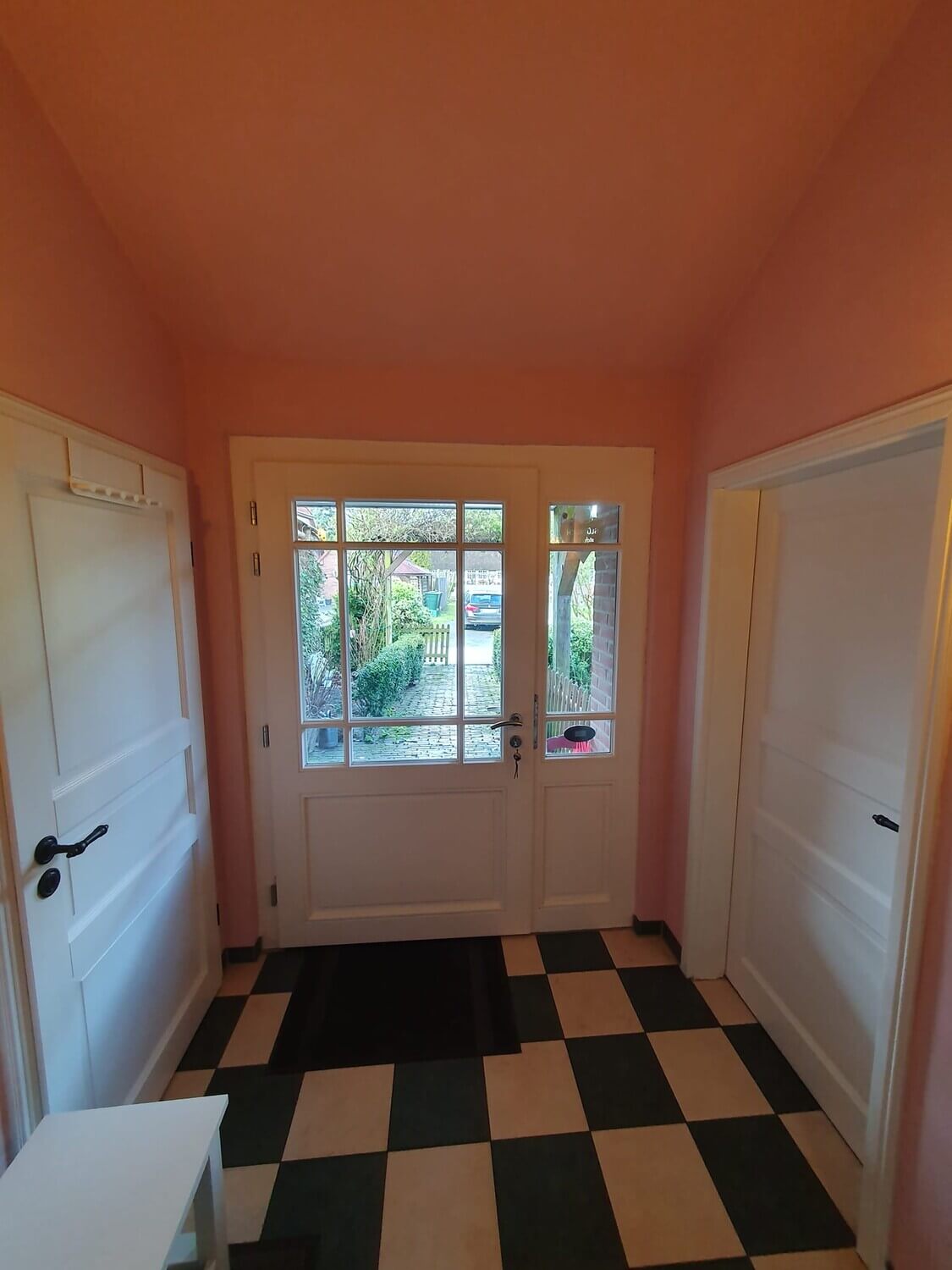
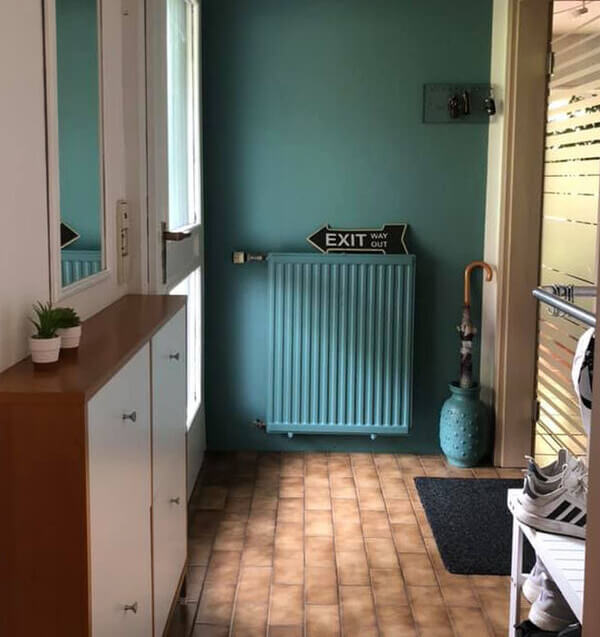
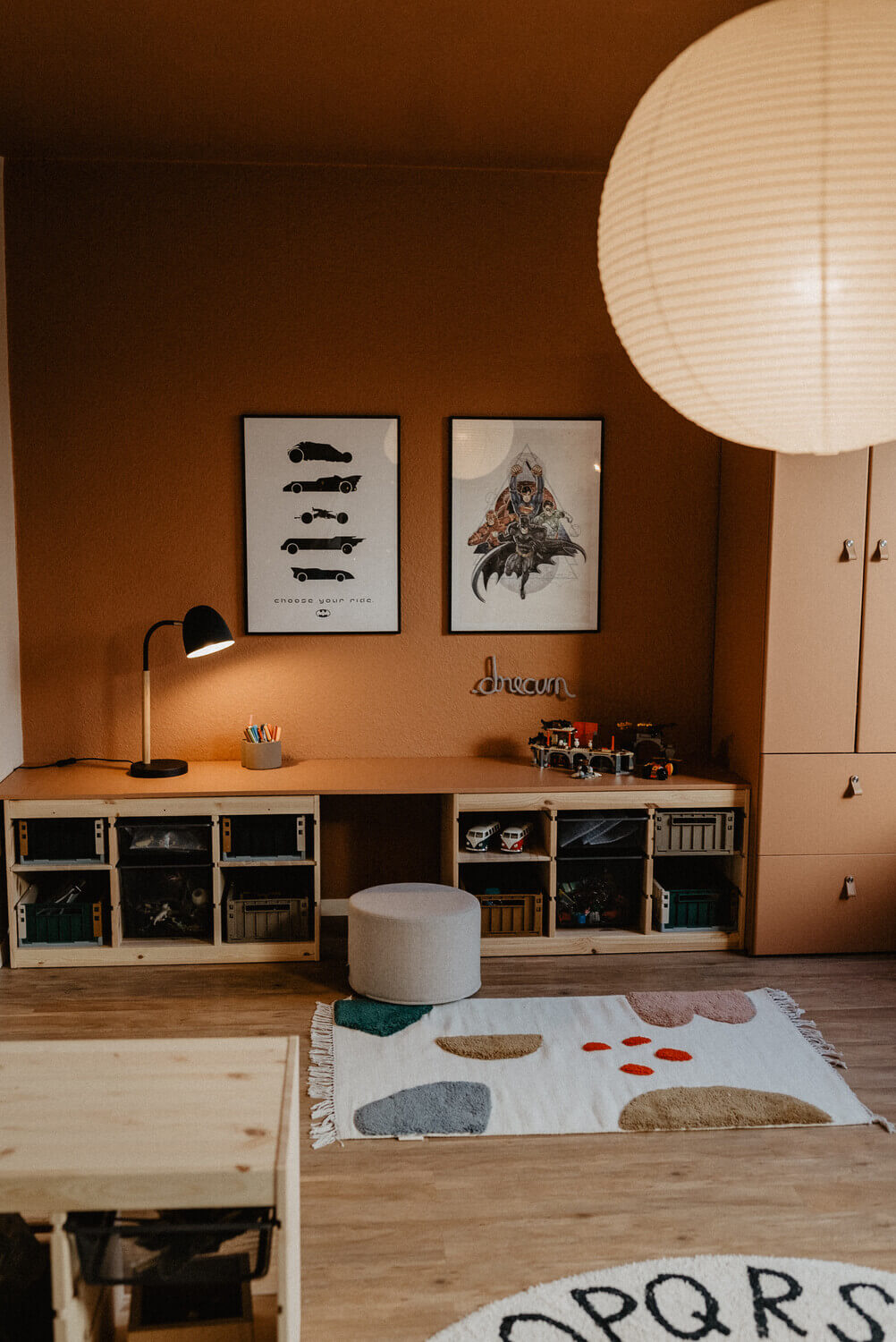
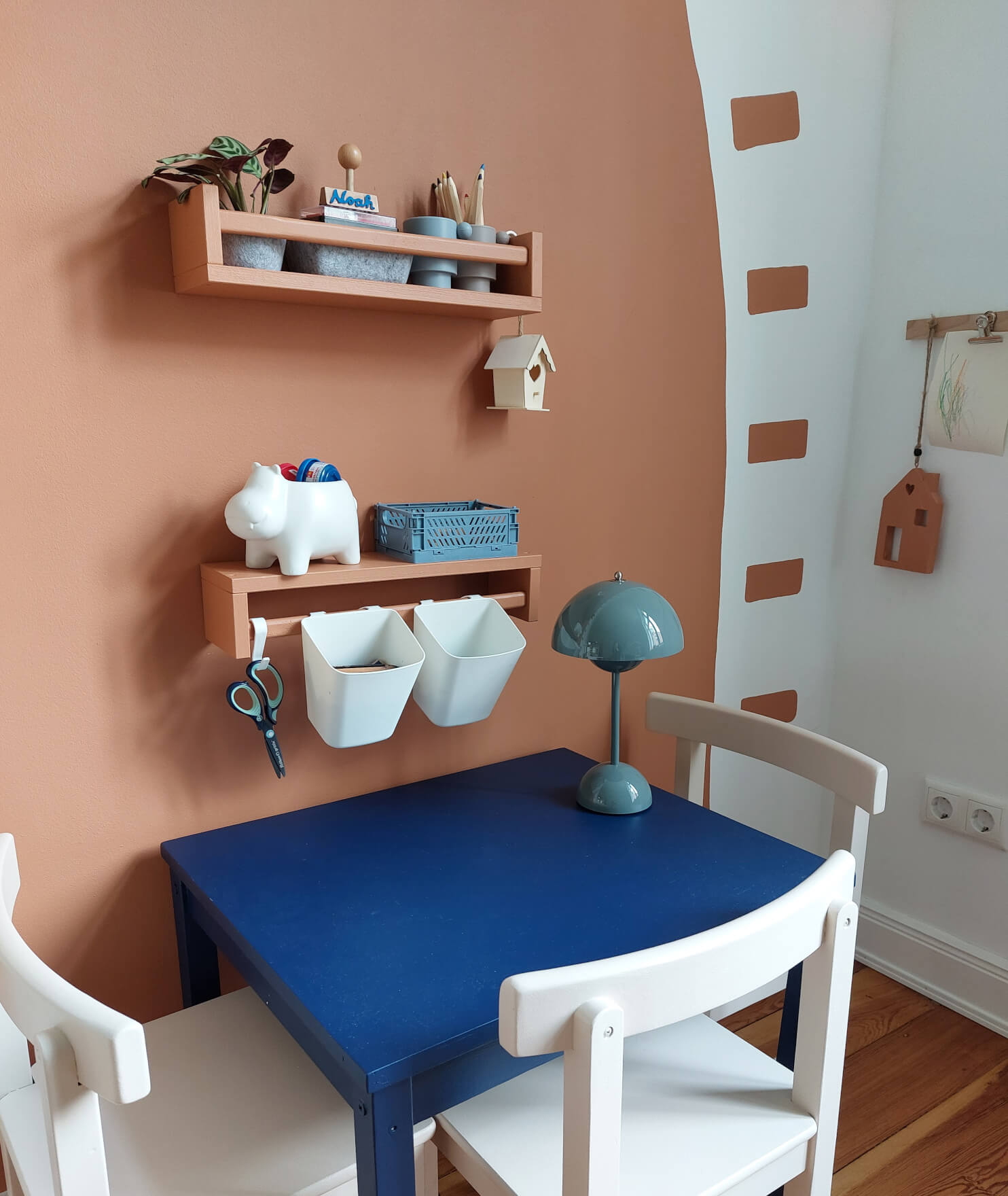
Simple instructions for painting furniture, ceiling and wall in the same colour
Step 1: Start with the ceiling, paint it twice.
Step 2: Then paint the walls. For a rich coat of paint, we recommend two coats.
Step 3: If you want to paint unencumbered furniture in the same colour shade, use either wall paint or the varnish quality MissPompadour Matt Varnish in the same colour shade. The Eggshell Varnish quality looks a little brighter because it reflects the light differently. If you use wall paint, it makes sense to stabilise the surfaces with MissPompadour To Seal.
You can find detailed instructions in our blogs on painting ceilings and painting walls.
FAQs on monochrome furnishing
Which do you paint first: the ceiling or the wall?
When painting, always start with the ceiling. This way you can easily paint over any splashes that accidentally land on the wall later. Before you start, don't forget to remove the lamps and tape off the light switches and sockets. Then paint the walls.
Can furniture be painted with wall paint?
In principle, you can also paint wood and metal with wall paint. As wall paint adheres less to smooth surfaces than varnishesn, we recommend it only on unstressed furniture or on open wood.
In other cases use the varnishes Eggshell Varnish, Matt Varnish or the LittlePomp chalk varnish. On very smooth surfaces, such as painted surfaces, if you still want to use wall paint, precoat with To Bond & Block. As wall paint does not have the same stability as varnish, we recommend a final coat of To Seal.
Which colours are suitable for tone-on-tone design?
In principle, you can use all colour shades. For smaller rooms, you should choose lighter colour shades so that the room is not too oppressive. Larger rooms and those in which you are looking for relaxation can be painted intensively.
Which white shades and pastel colours are suitable for tone-in-tone furnishing?
Tinted whites and soft pastels, such as those found at LittlePomp, go particularly well with a monochrome interior design. Colours such as White with Marble, White with Sun or White with Vanilla make a special impression. Blue & Calm or Rose & Fearless can also make an impressive impact in any room.
Which natural tones for monochrome furnishings?
You can also do everything right with light colour shades from nature, be it beige, subtle greens and blues or a restrained yellow. Choose the delicate Green with Sage, the airy Blue with Cloud or - in a brightly lit room - Yellow with Sun. Beige with Cashmere and Beige with Peach add just the right touch of colour to any room.
Intense colour shades for tone-in-tone interior design?
You'll need some courage to use a rich colour, but in a bedroom, a tone-on-tone colour scheme can have a comforting and softening effect. Use a rich, dark orange shade, such as Orange with Rust or Orange with Chestnut. Red with Coral and Brown with Terracotta also make your bedroom appear warm and relaxing.
Create a darker, more secluded space with a mysterious, intense shade of green or blue. Paint our Blue with Ink or Green with Forest - both have a warm effect and promote a restful sleep.
Accessories for your project
At MissPompadour you will find everything you need to make your project a success.

